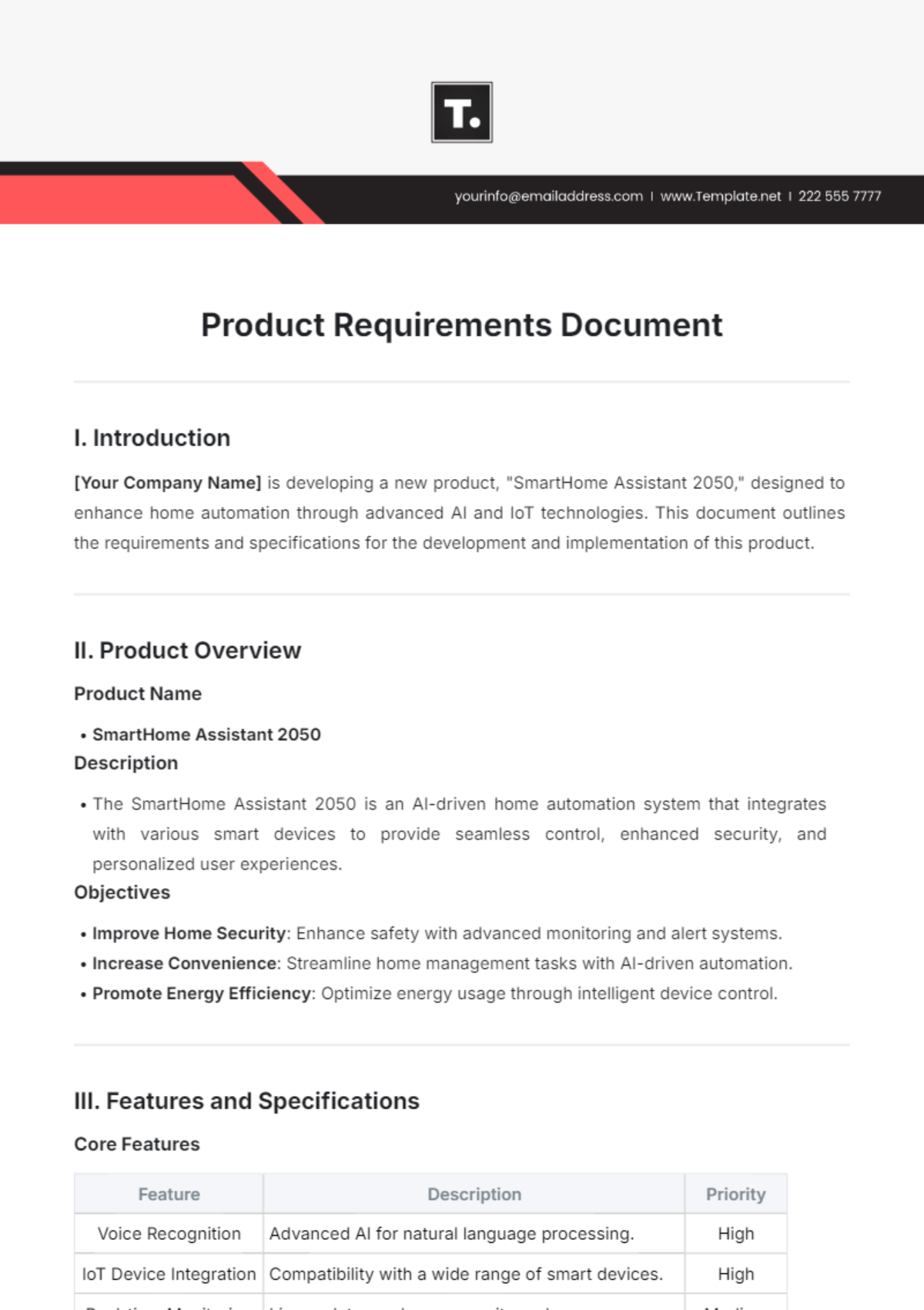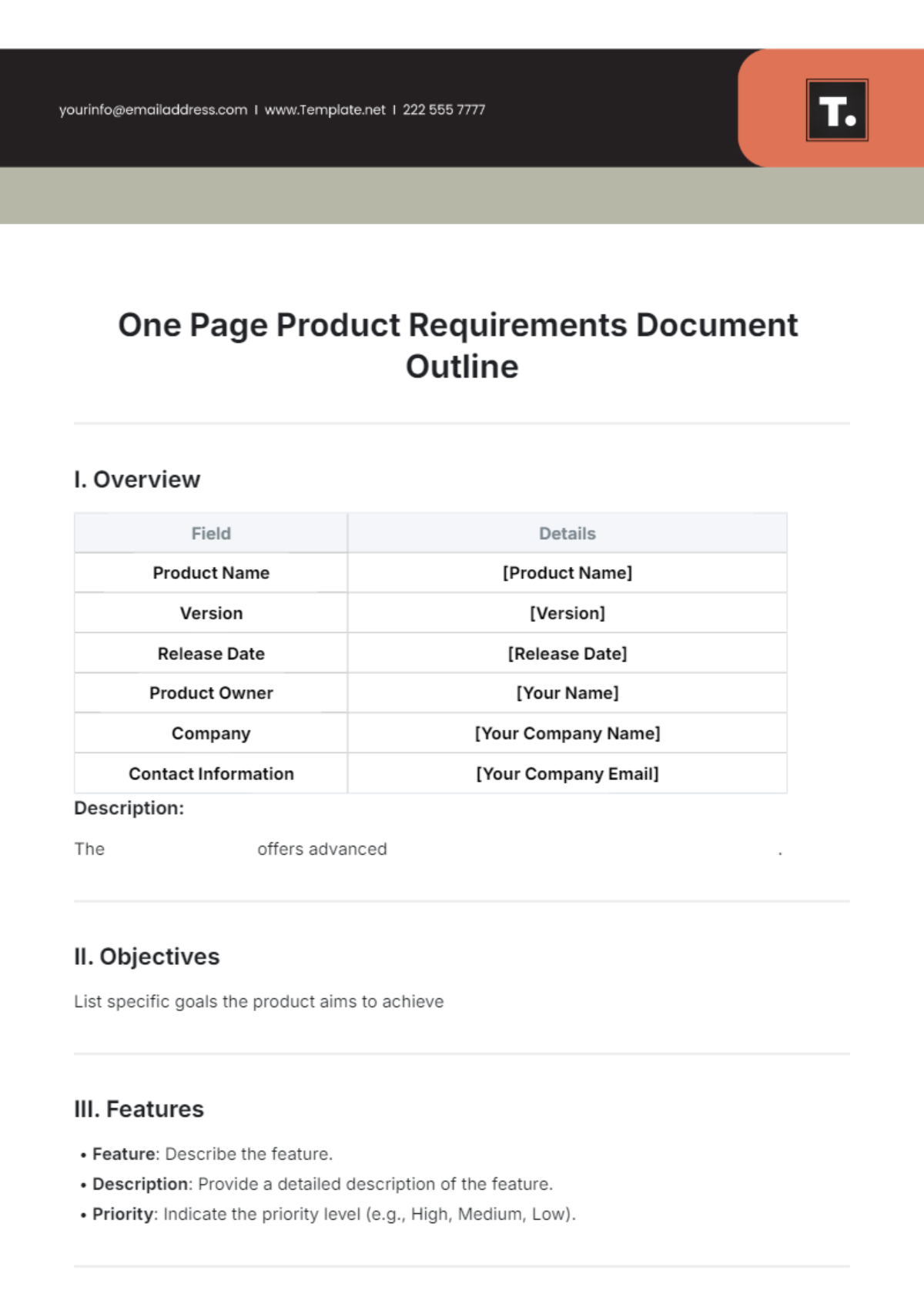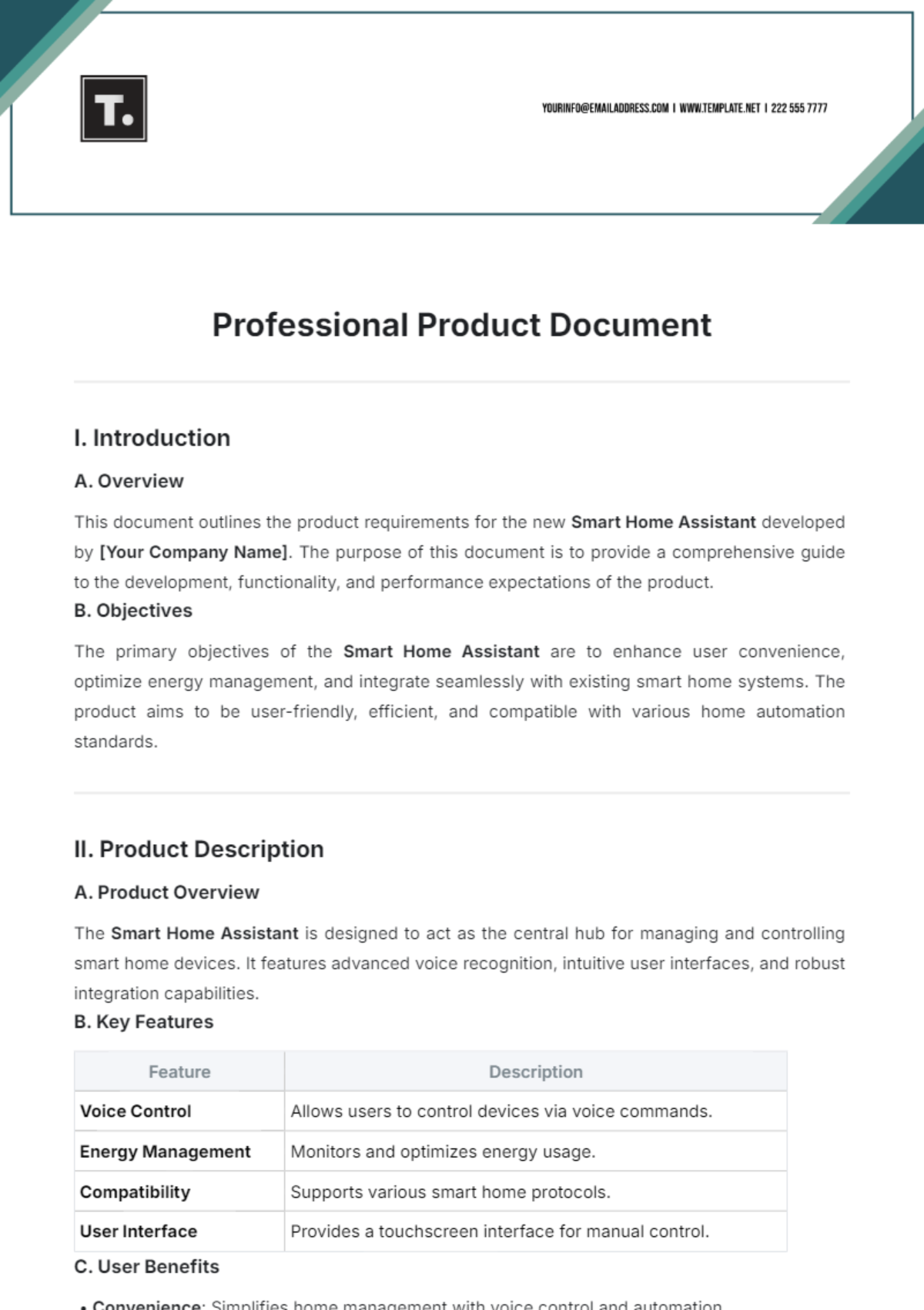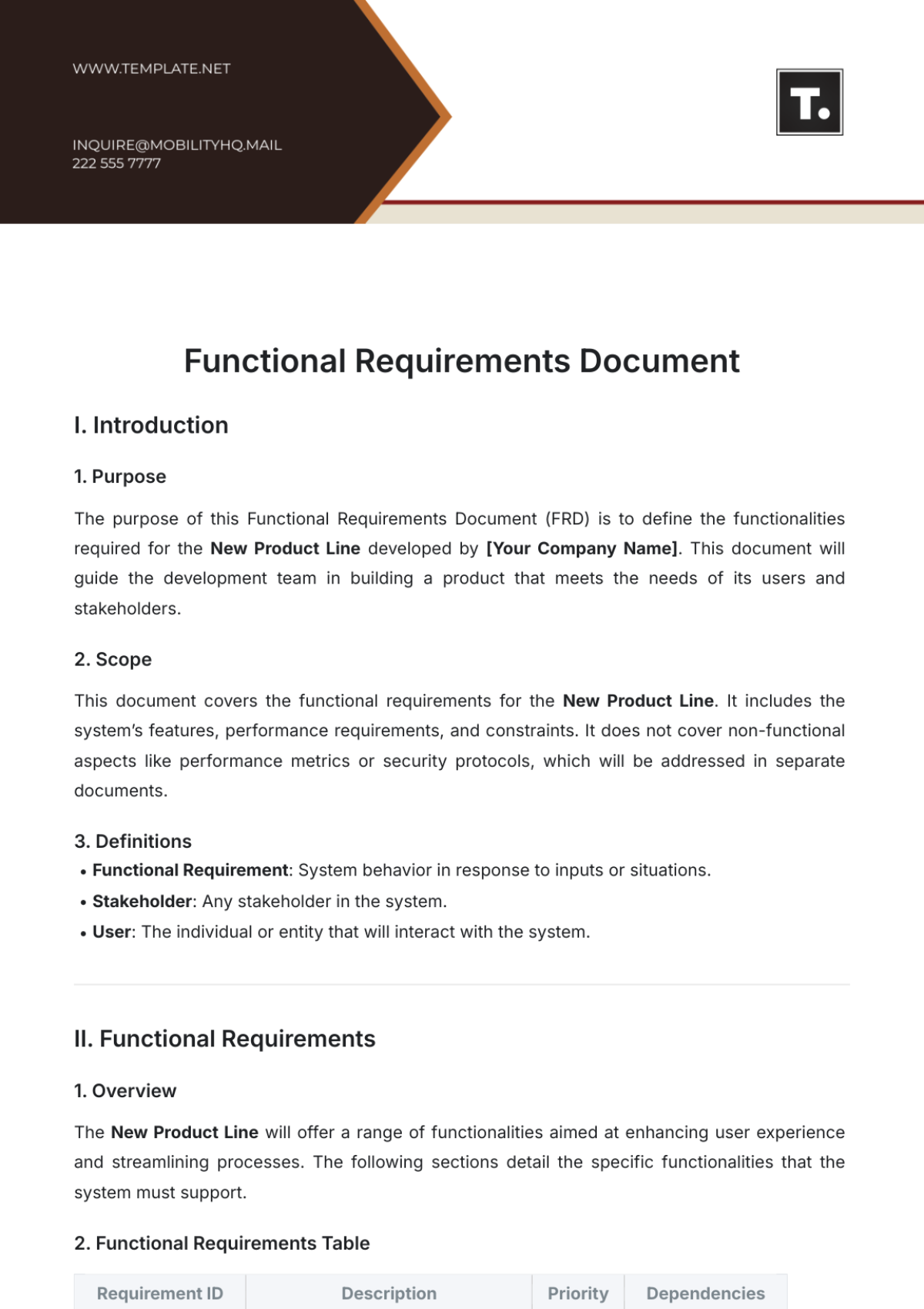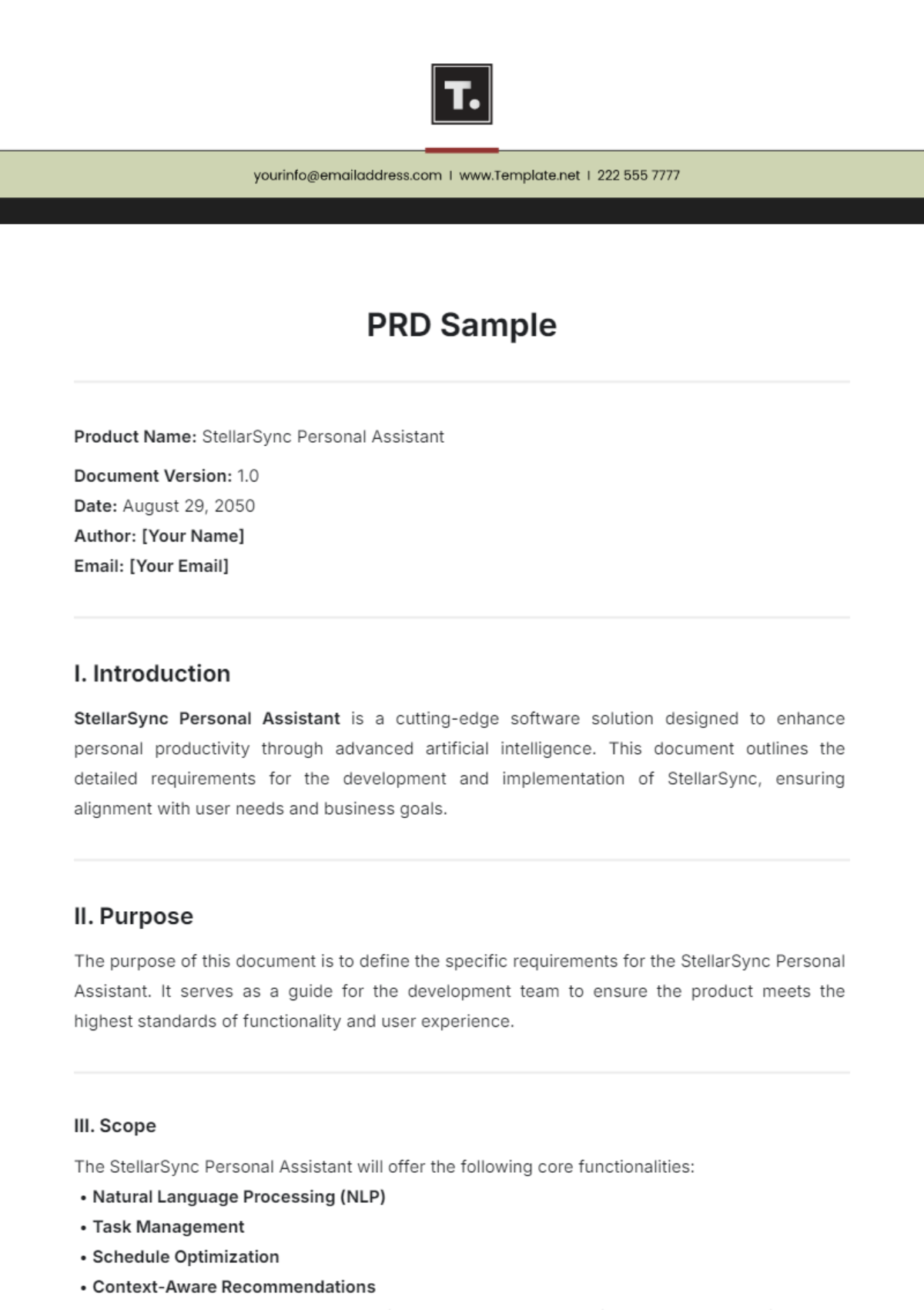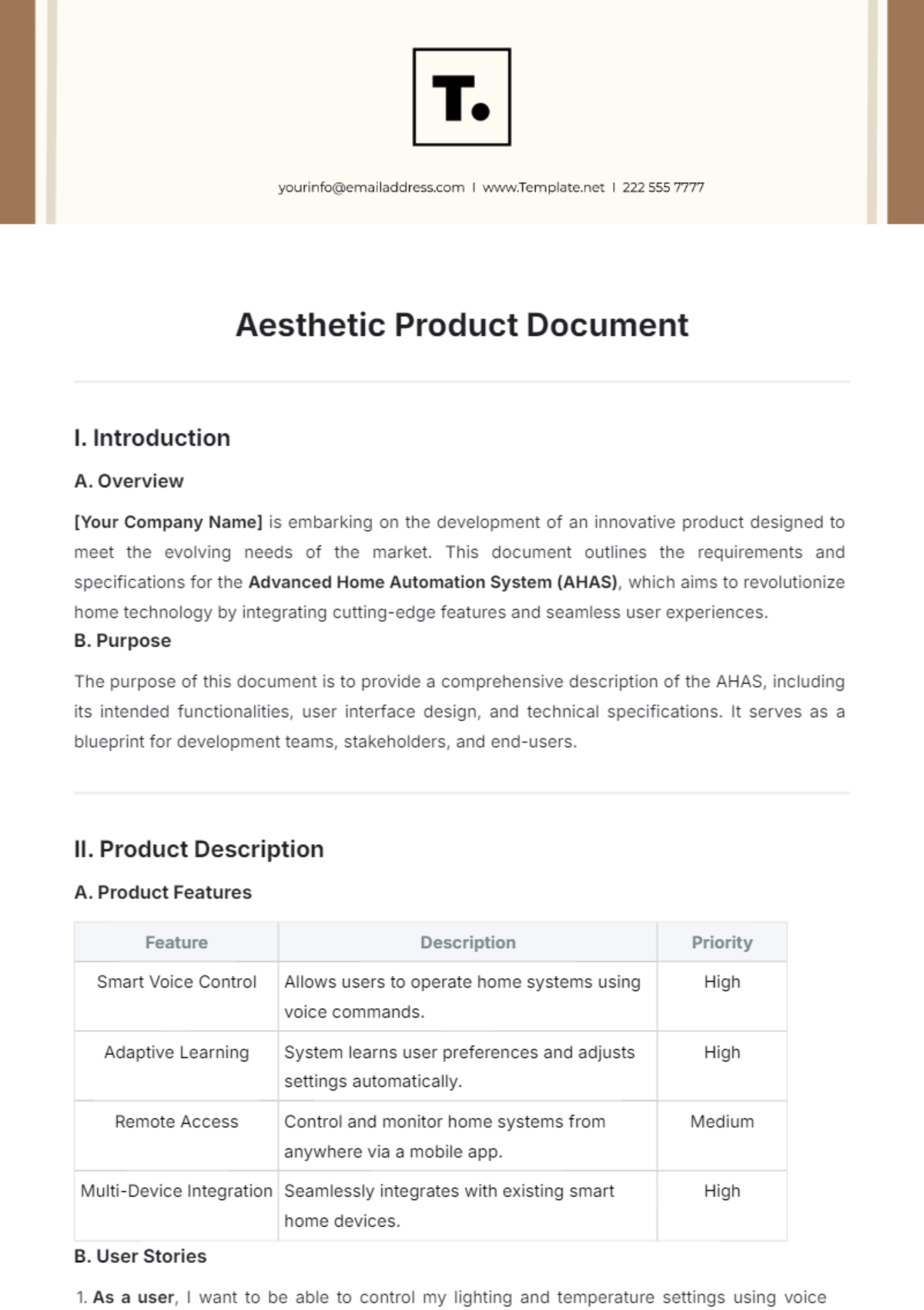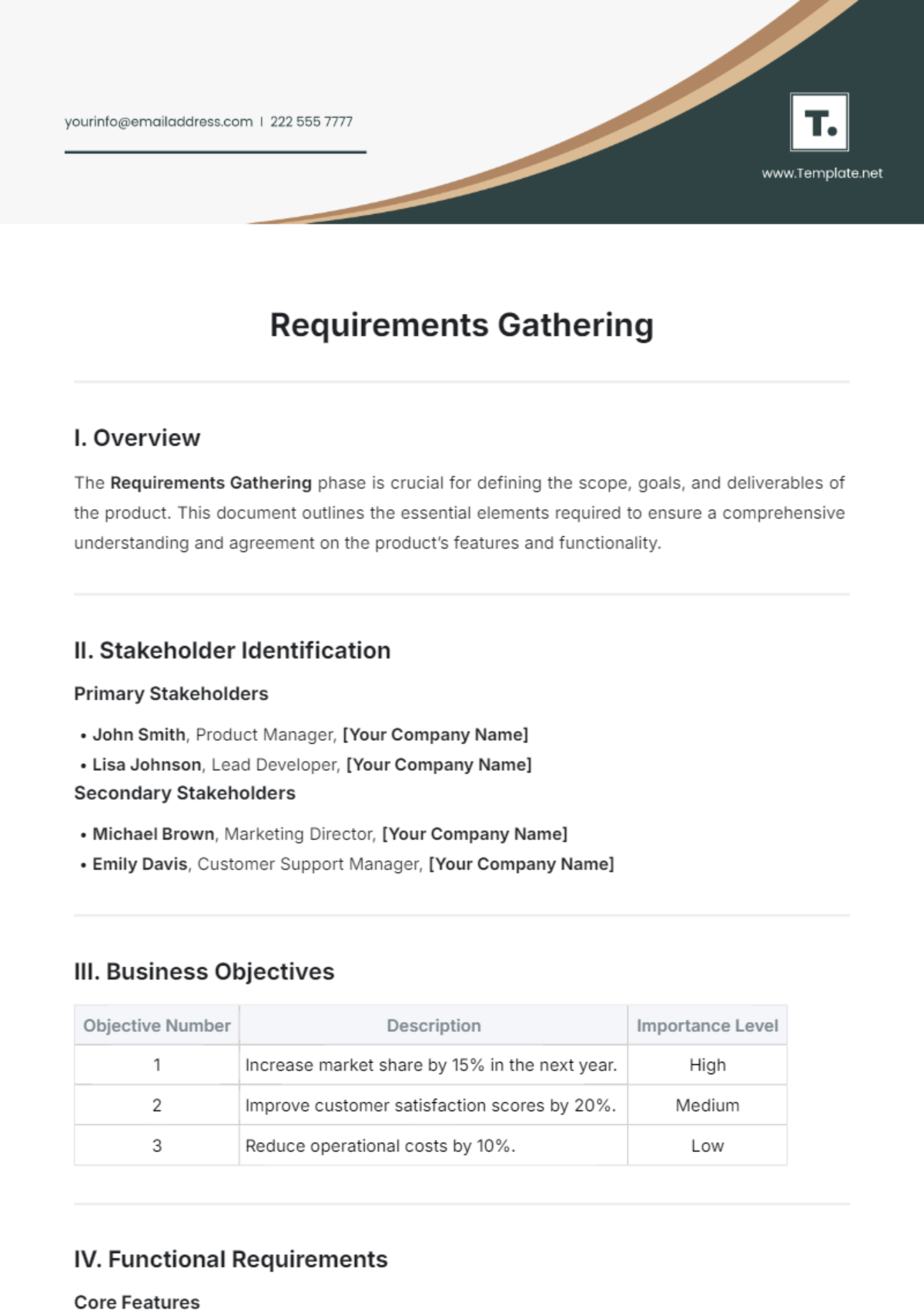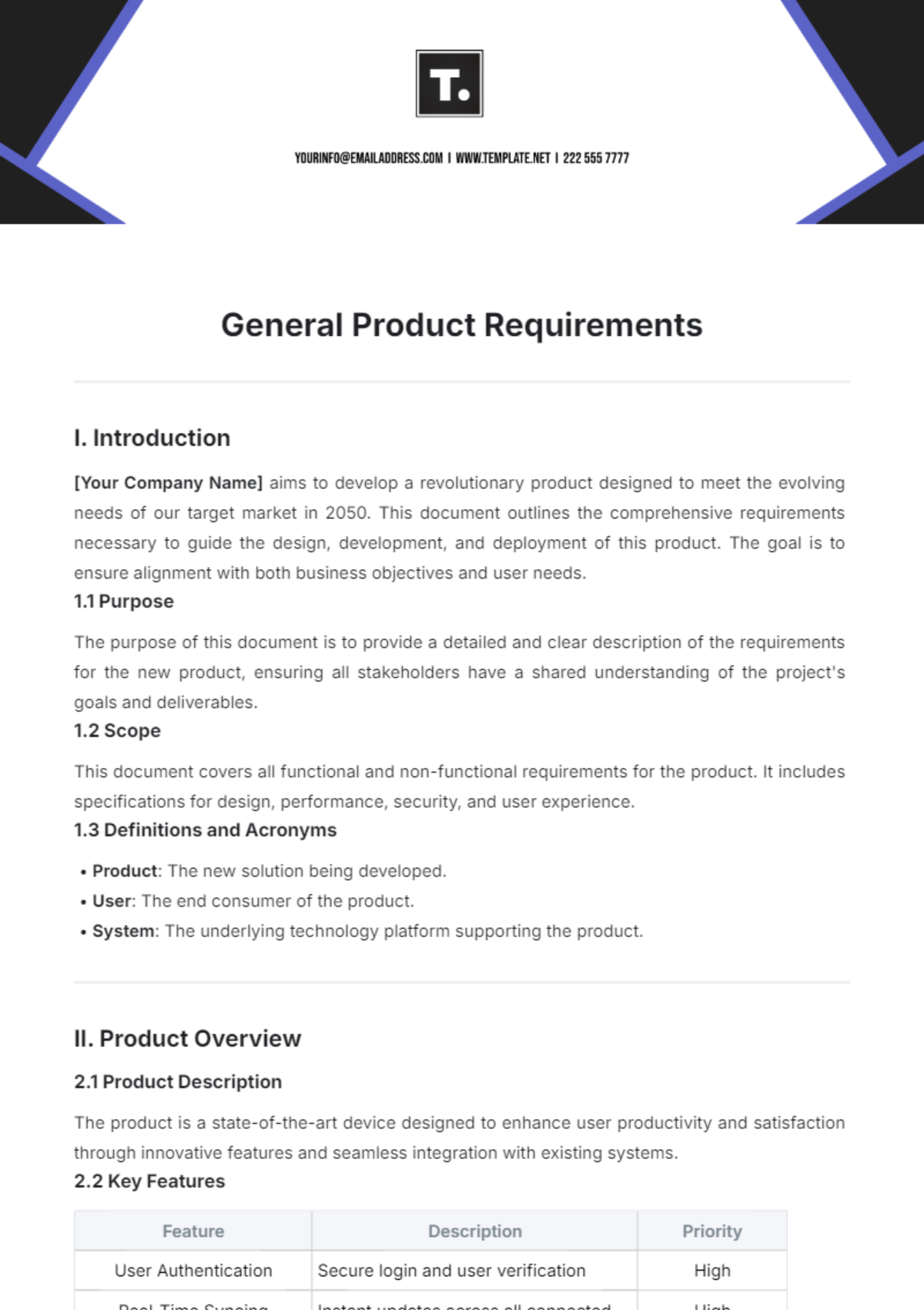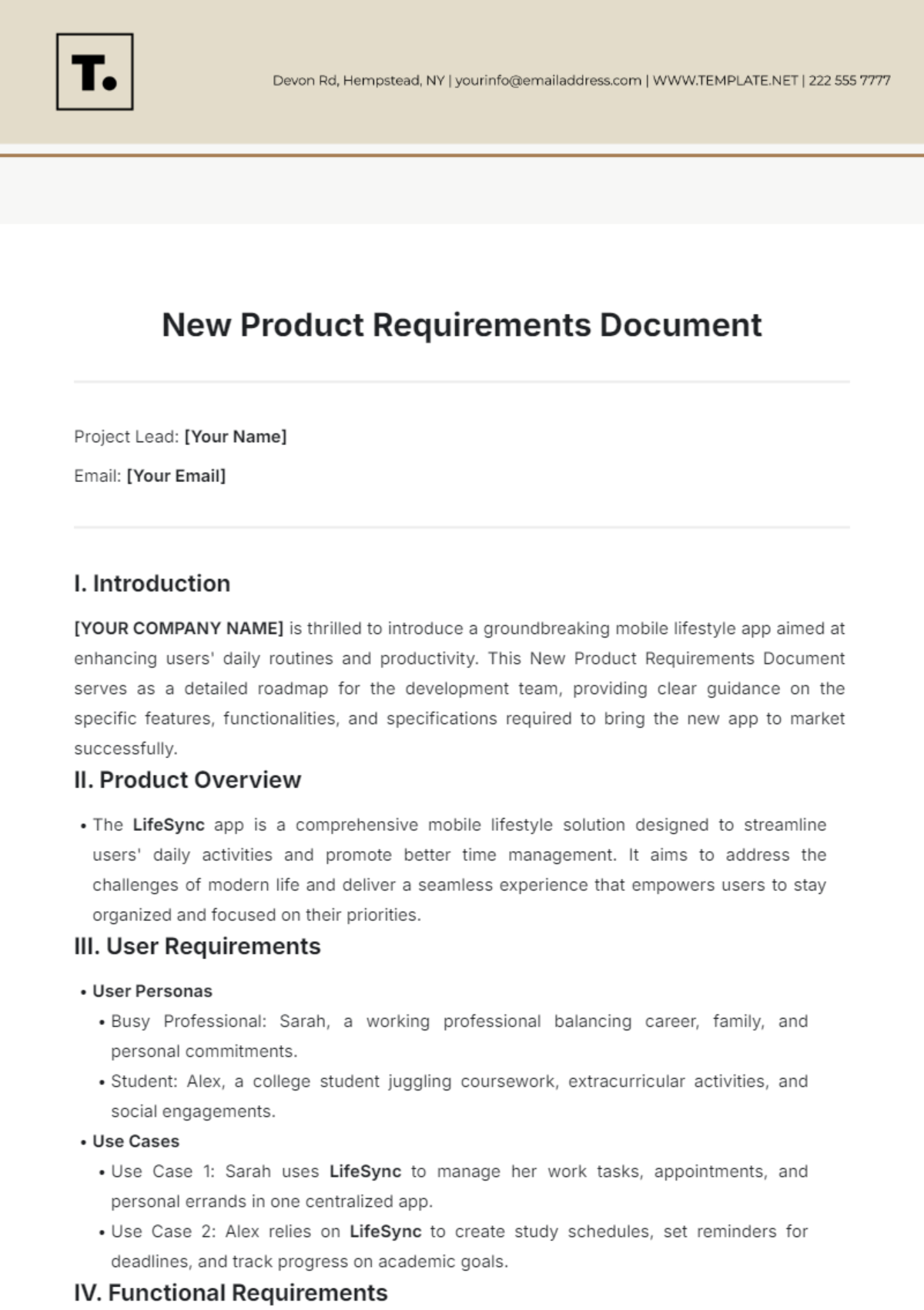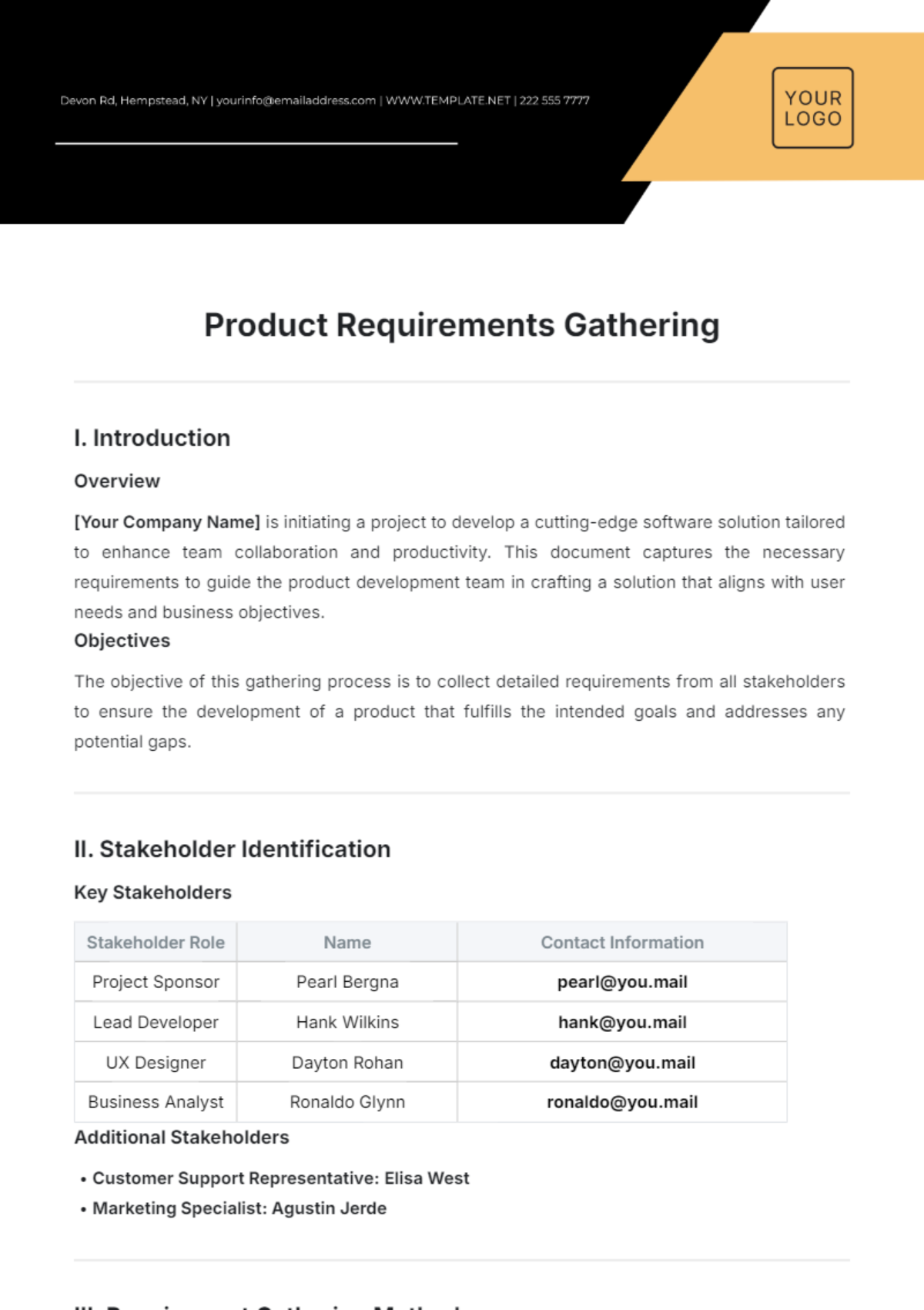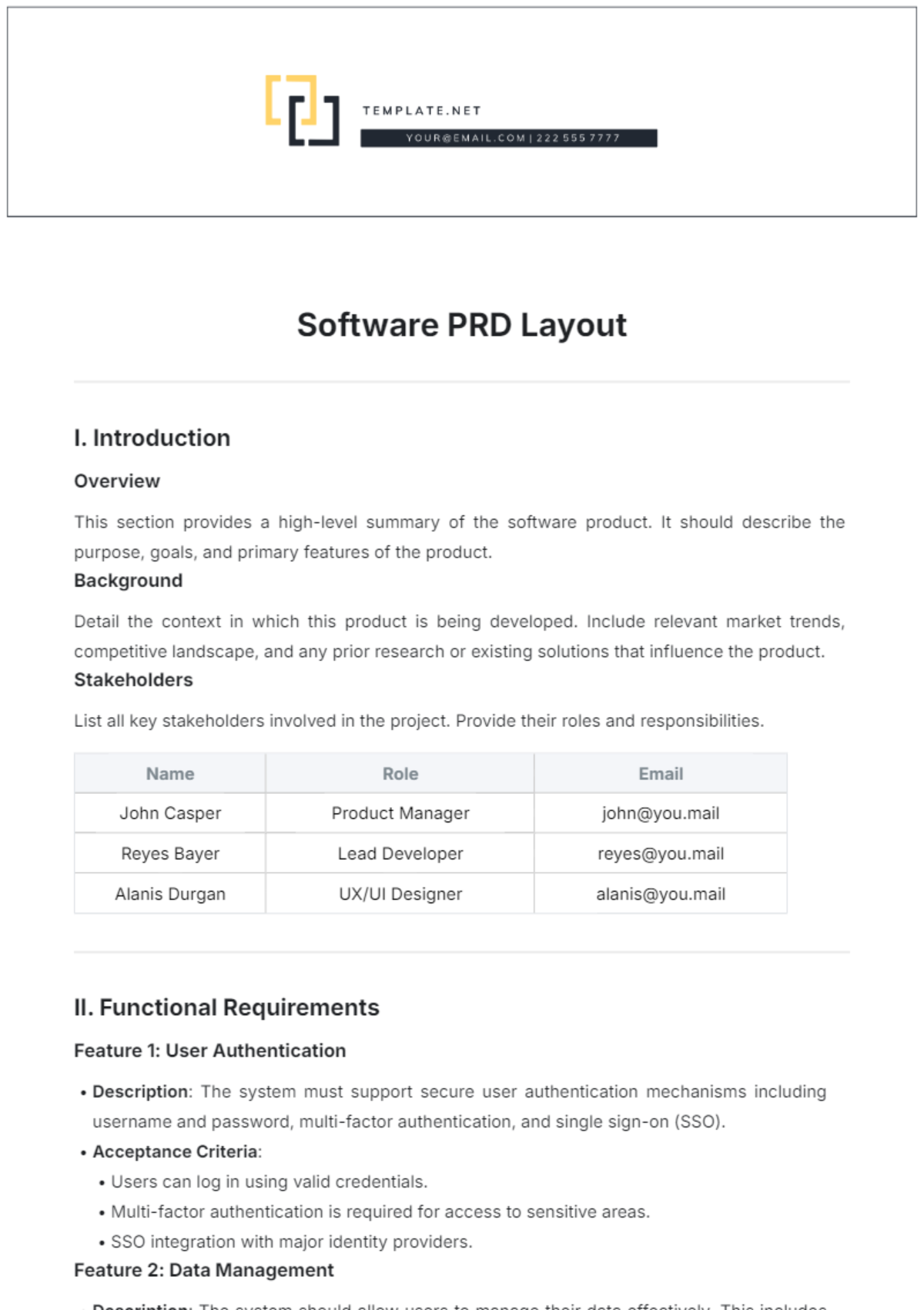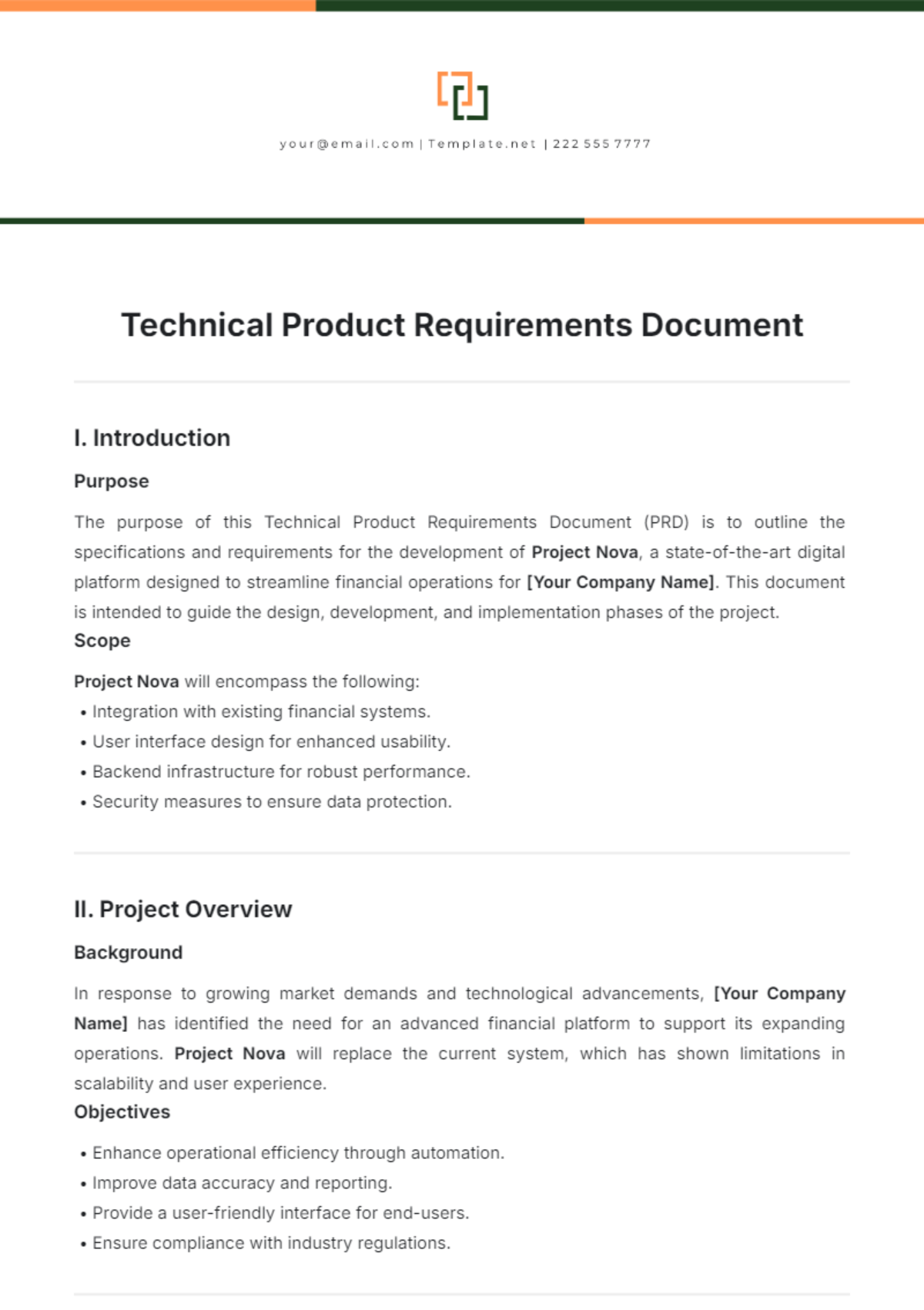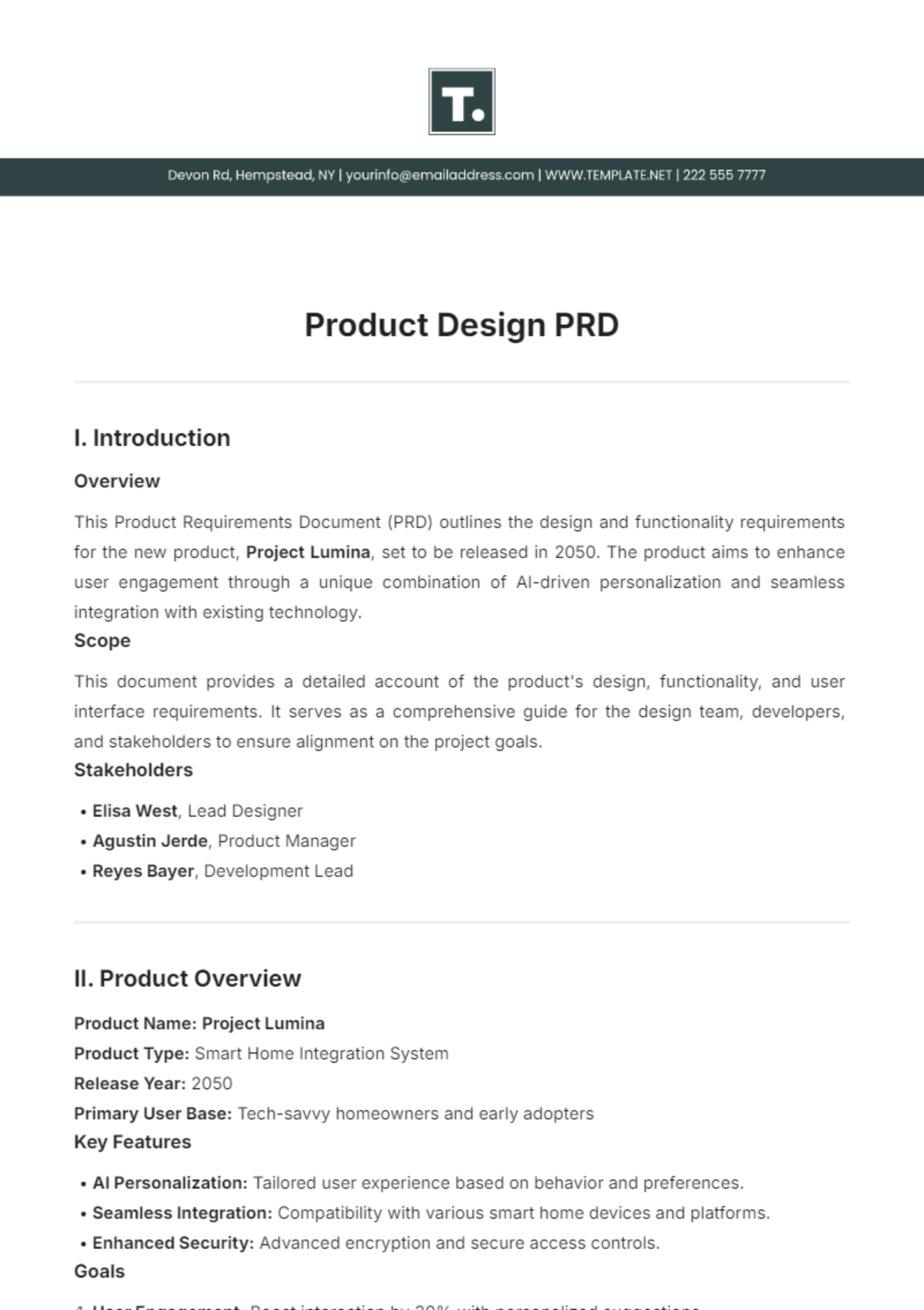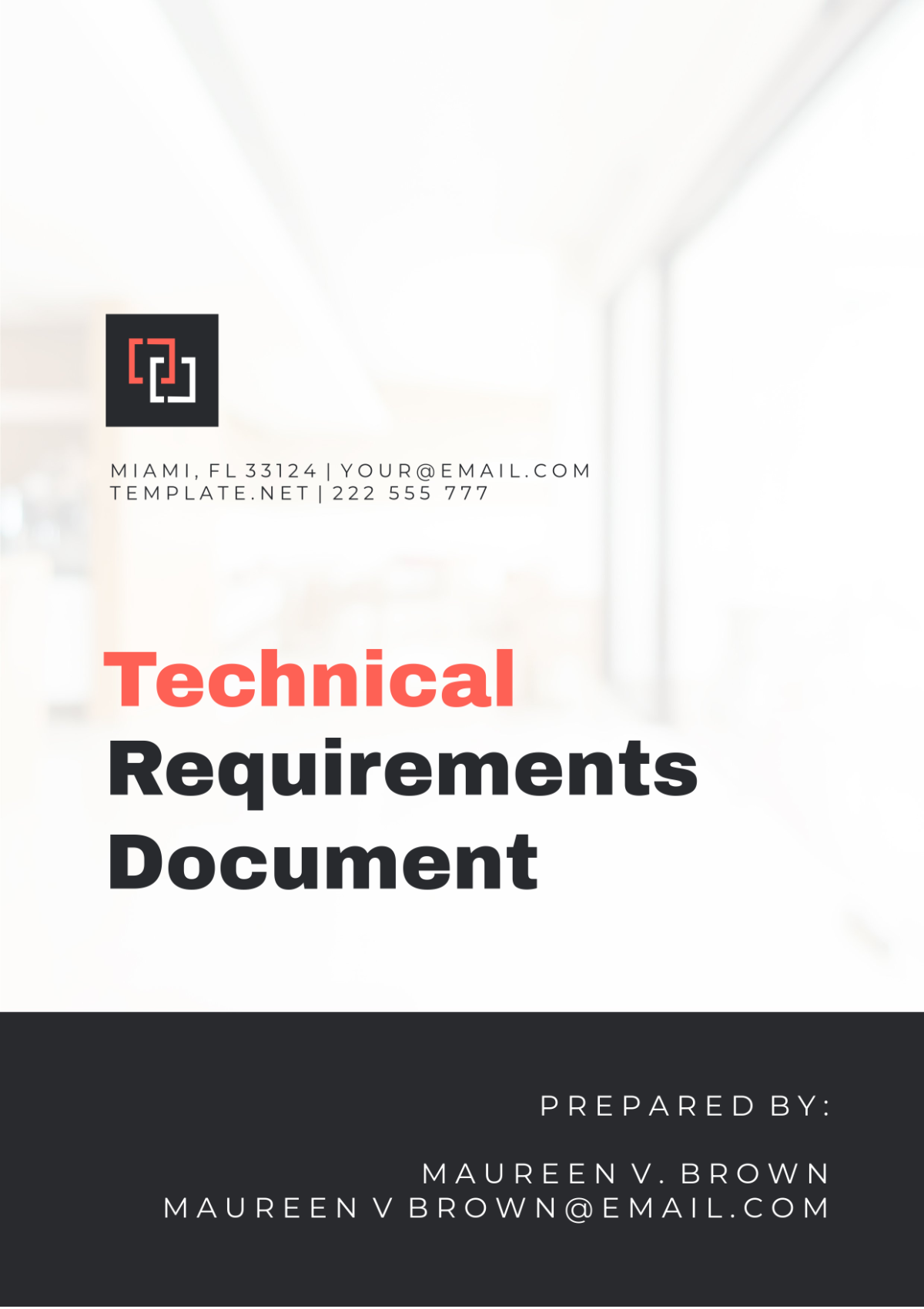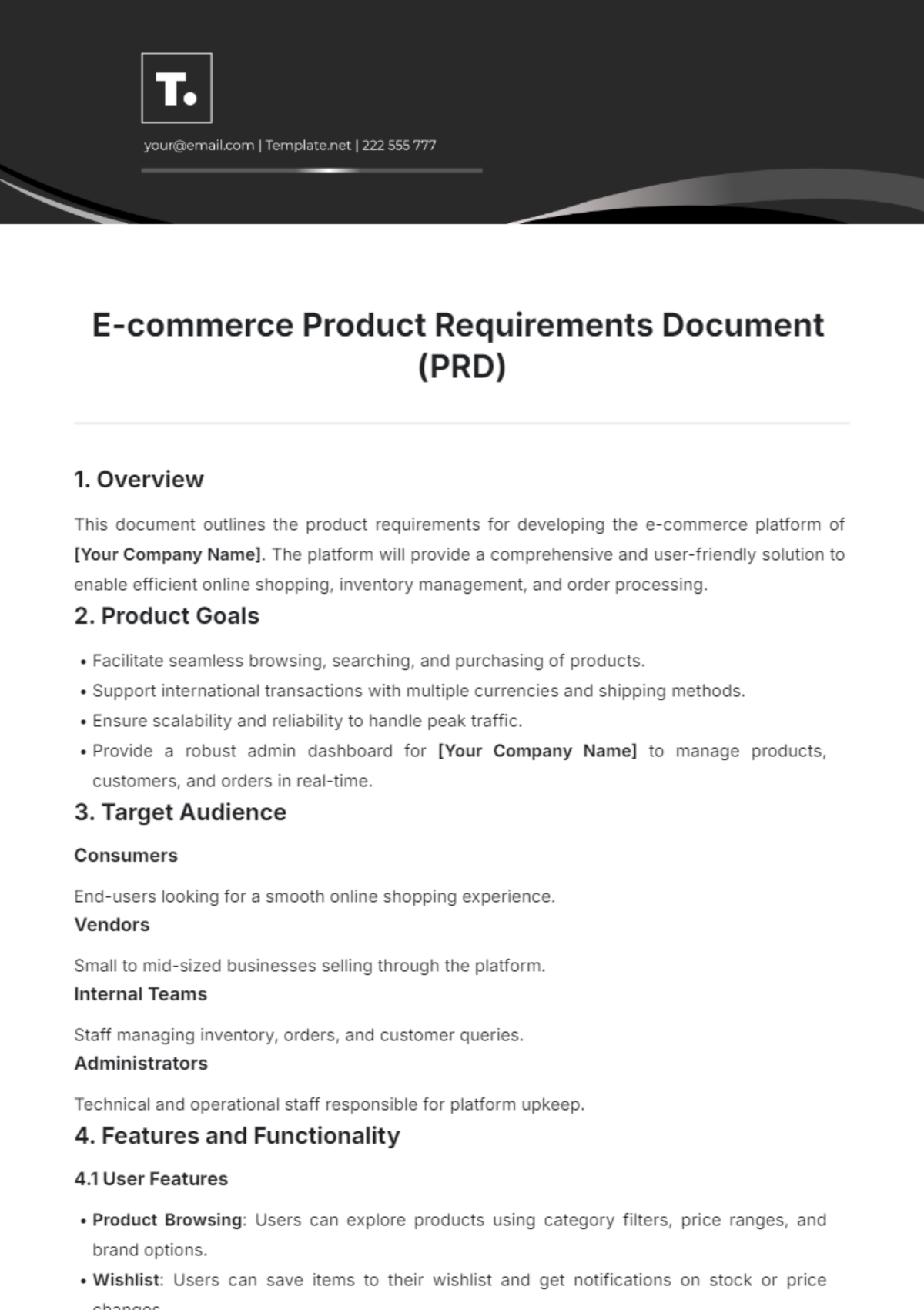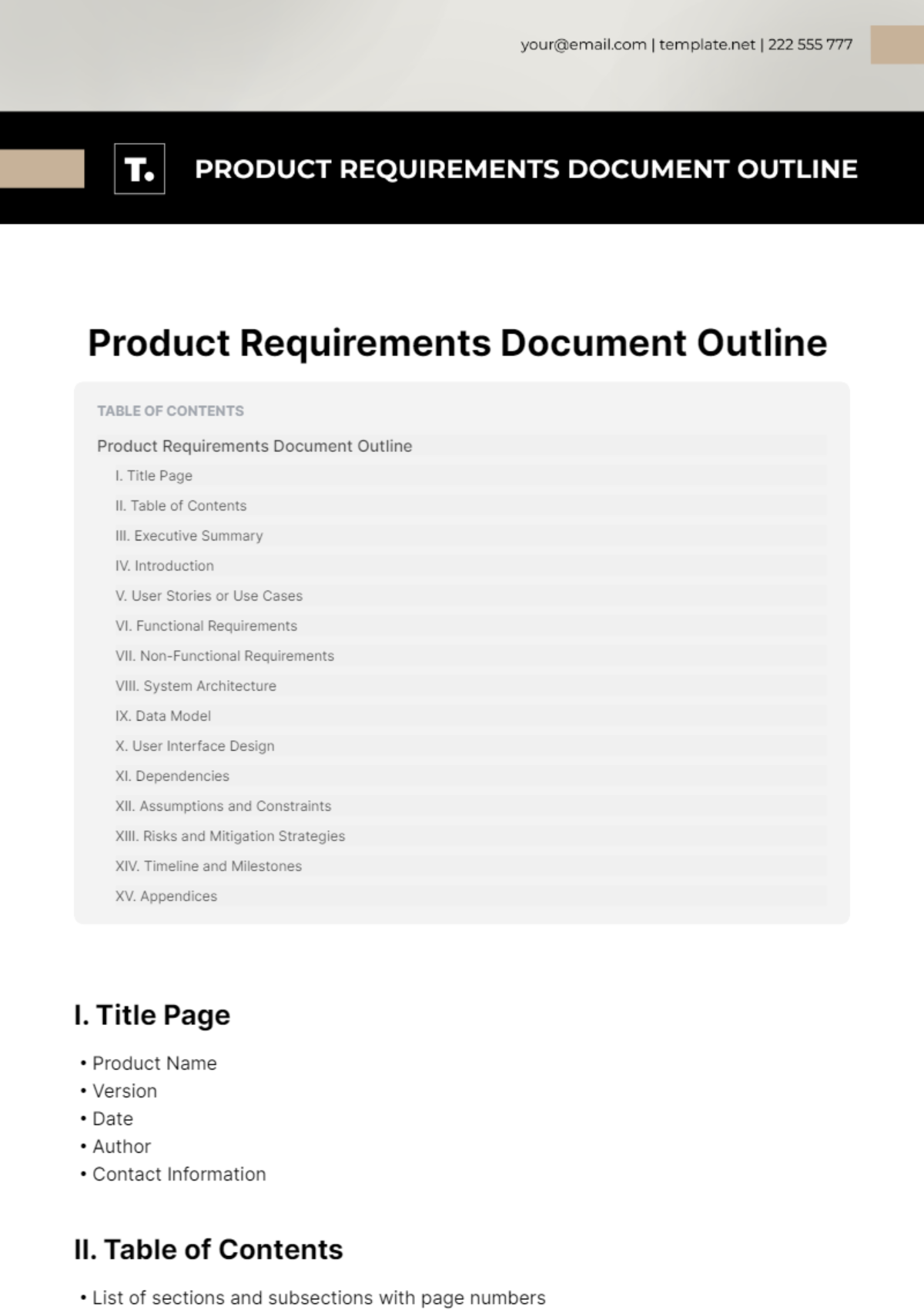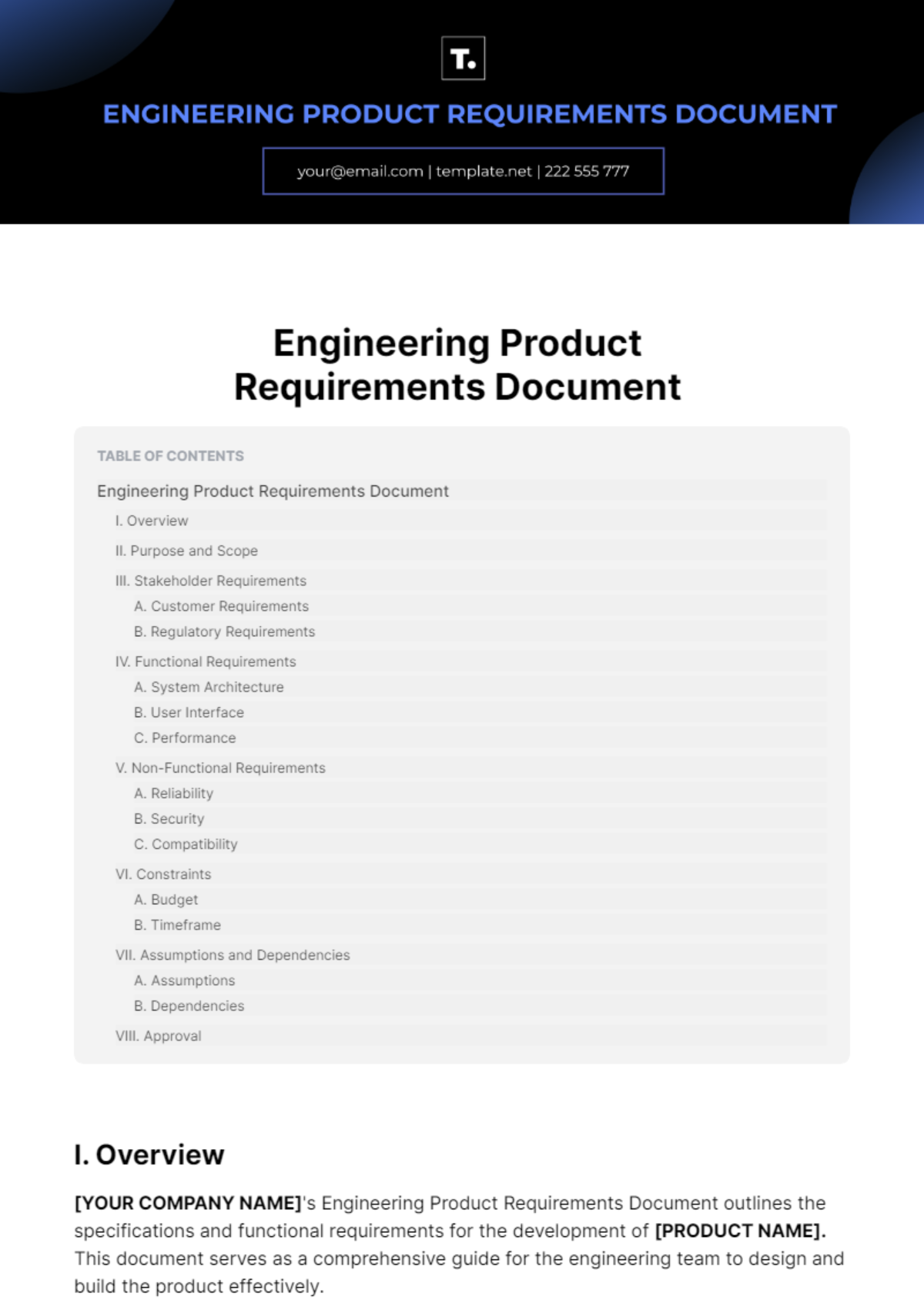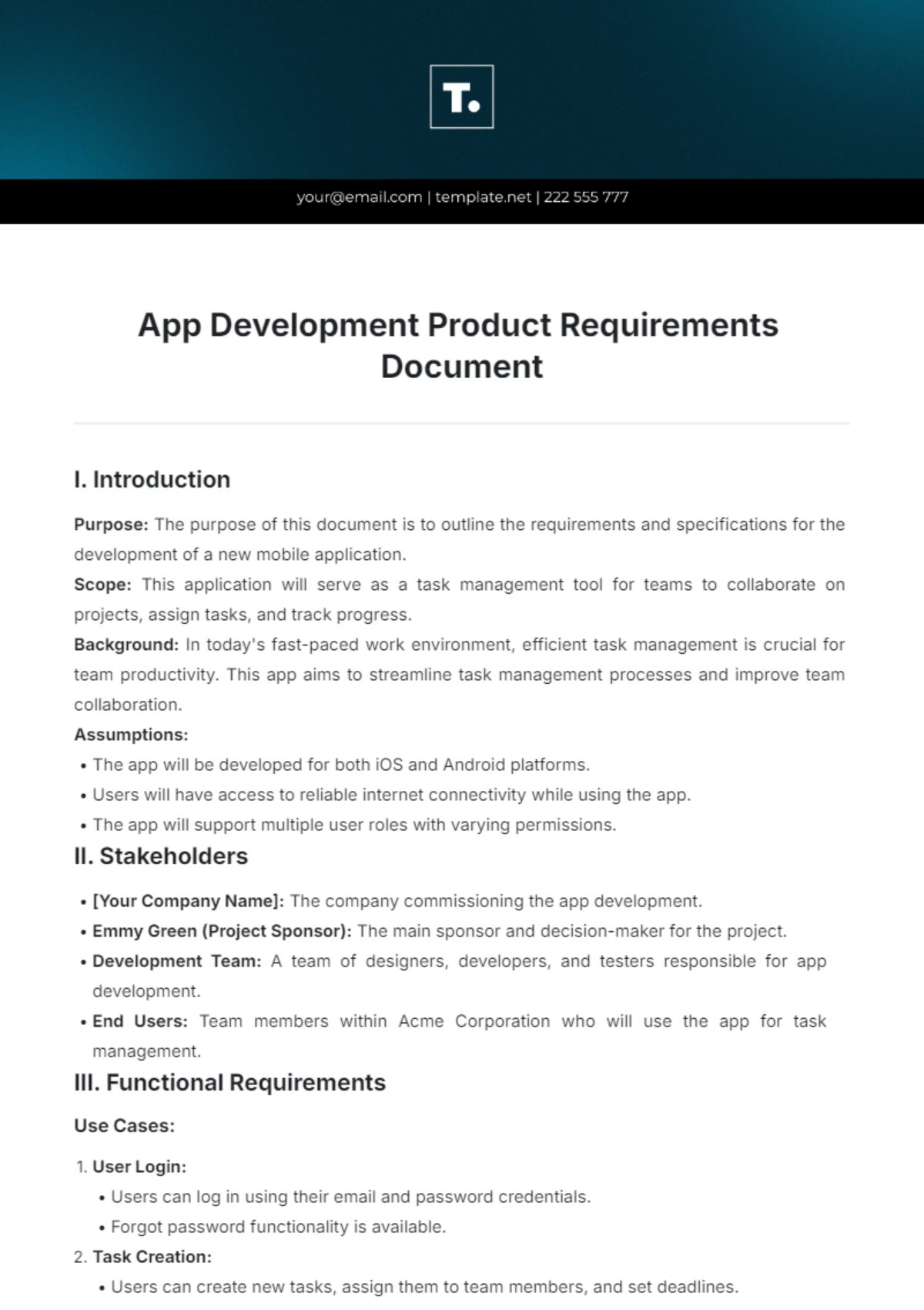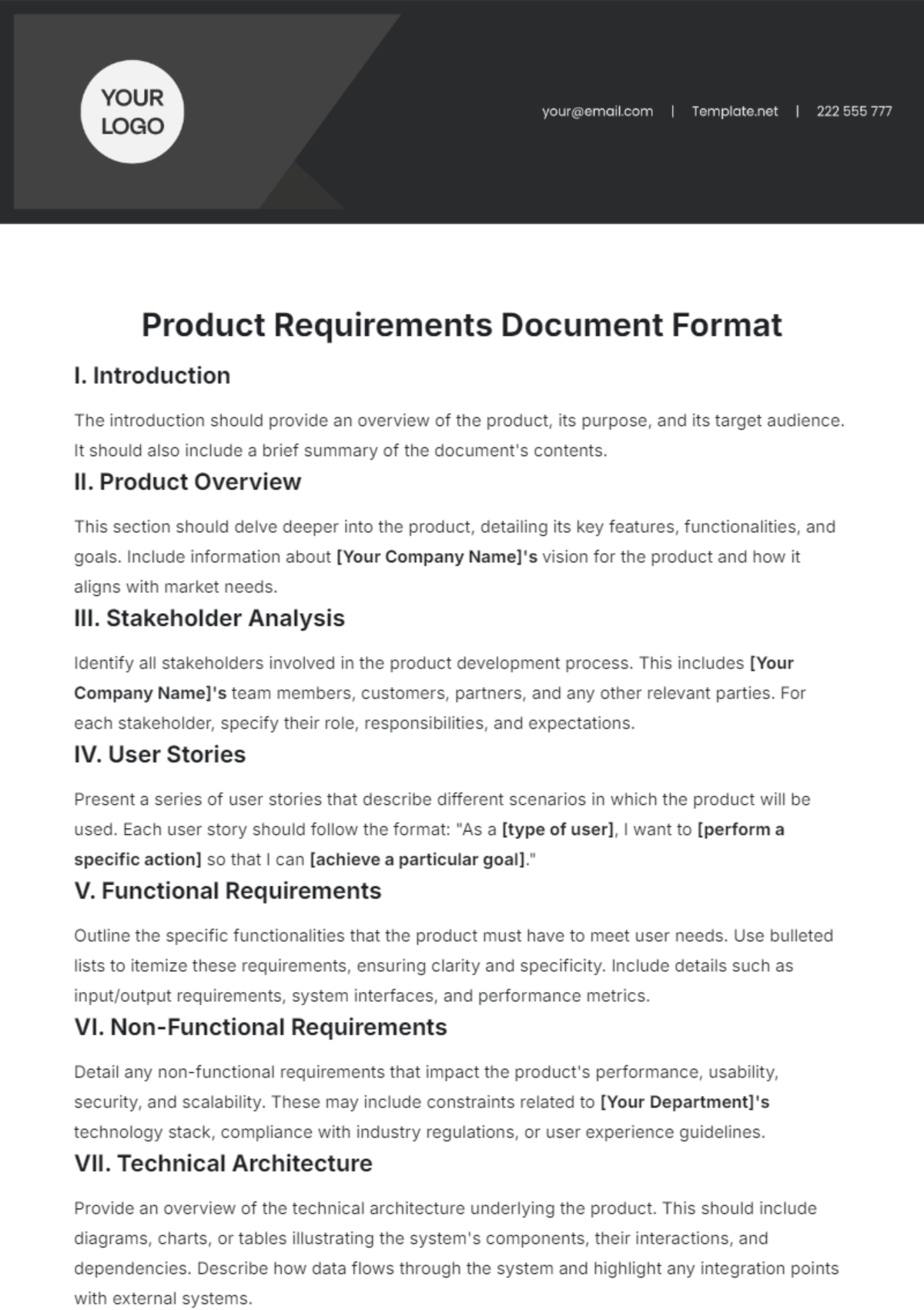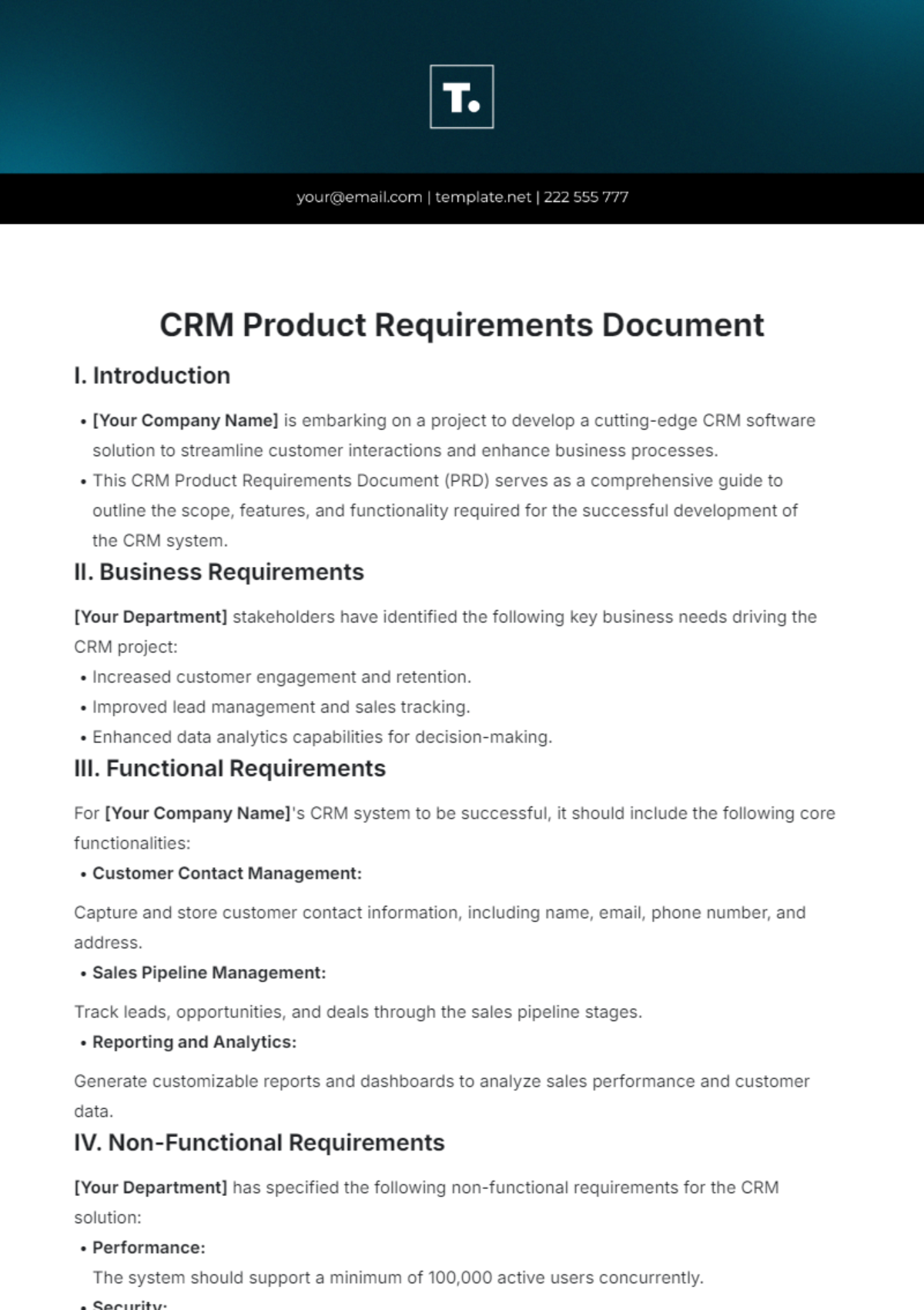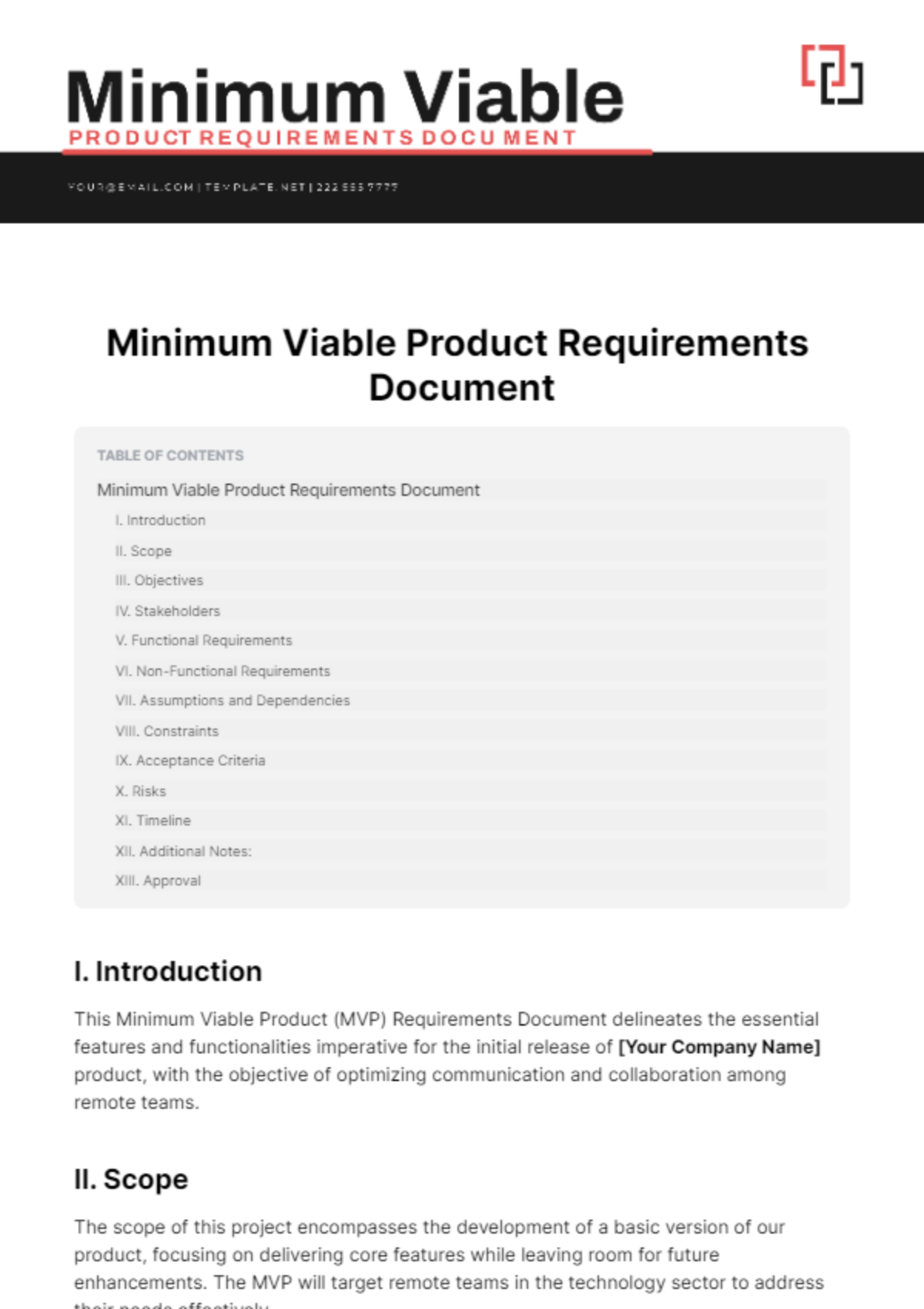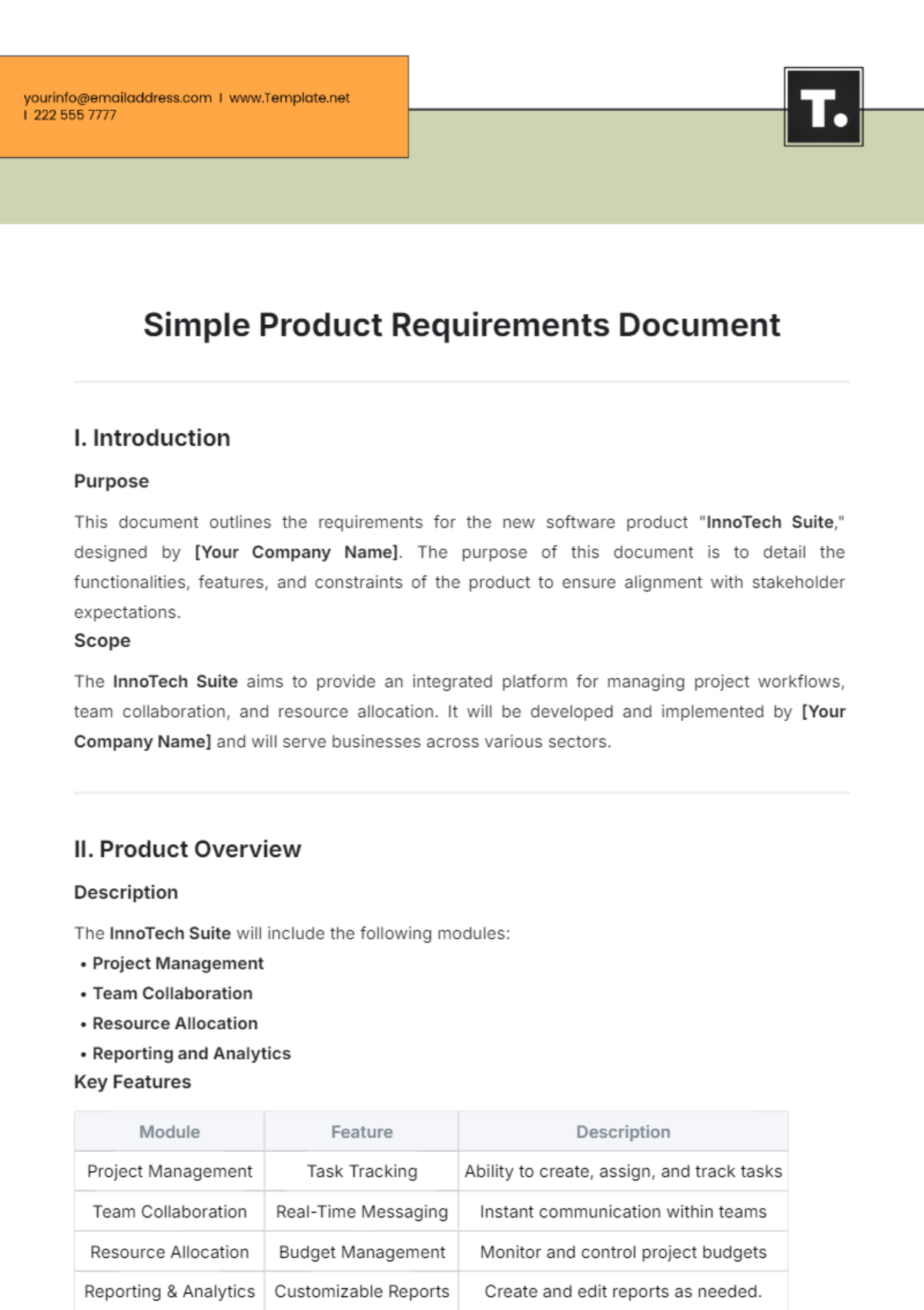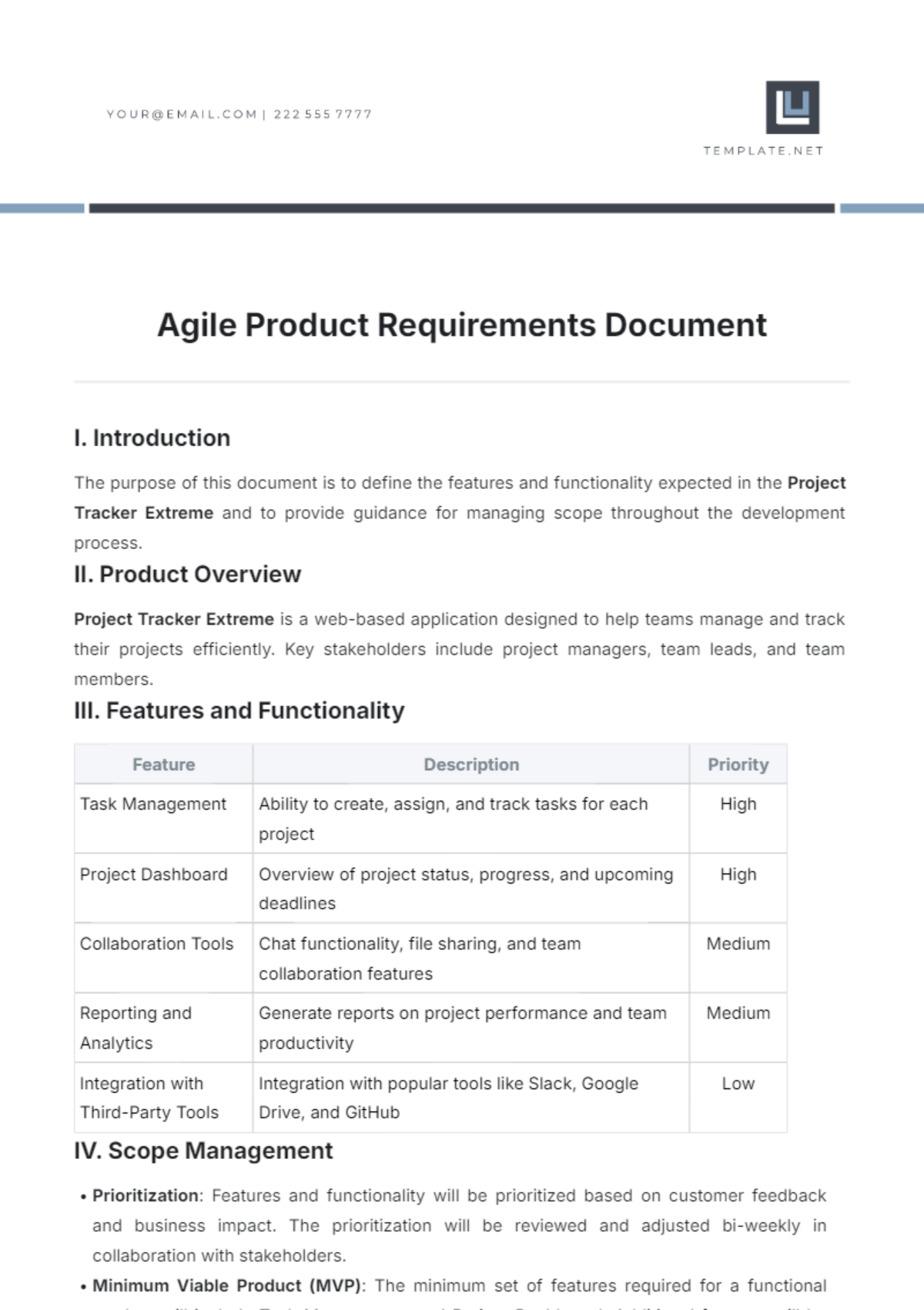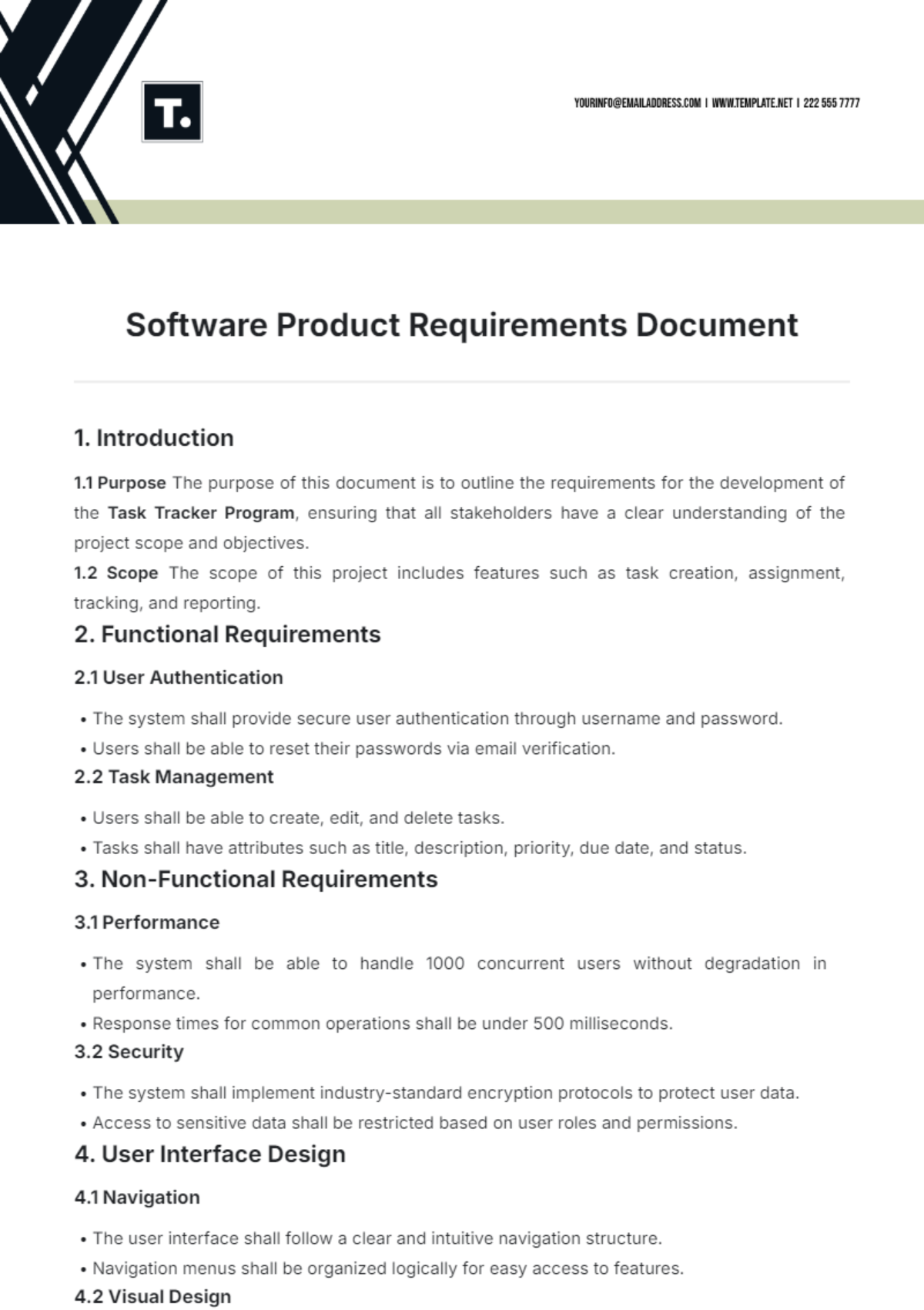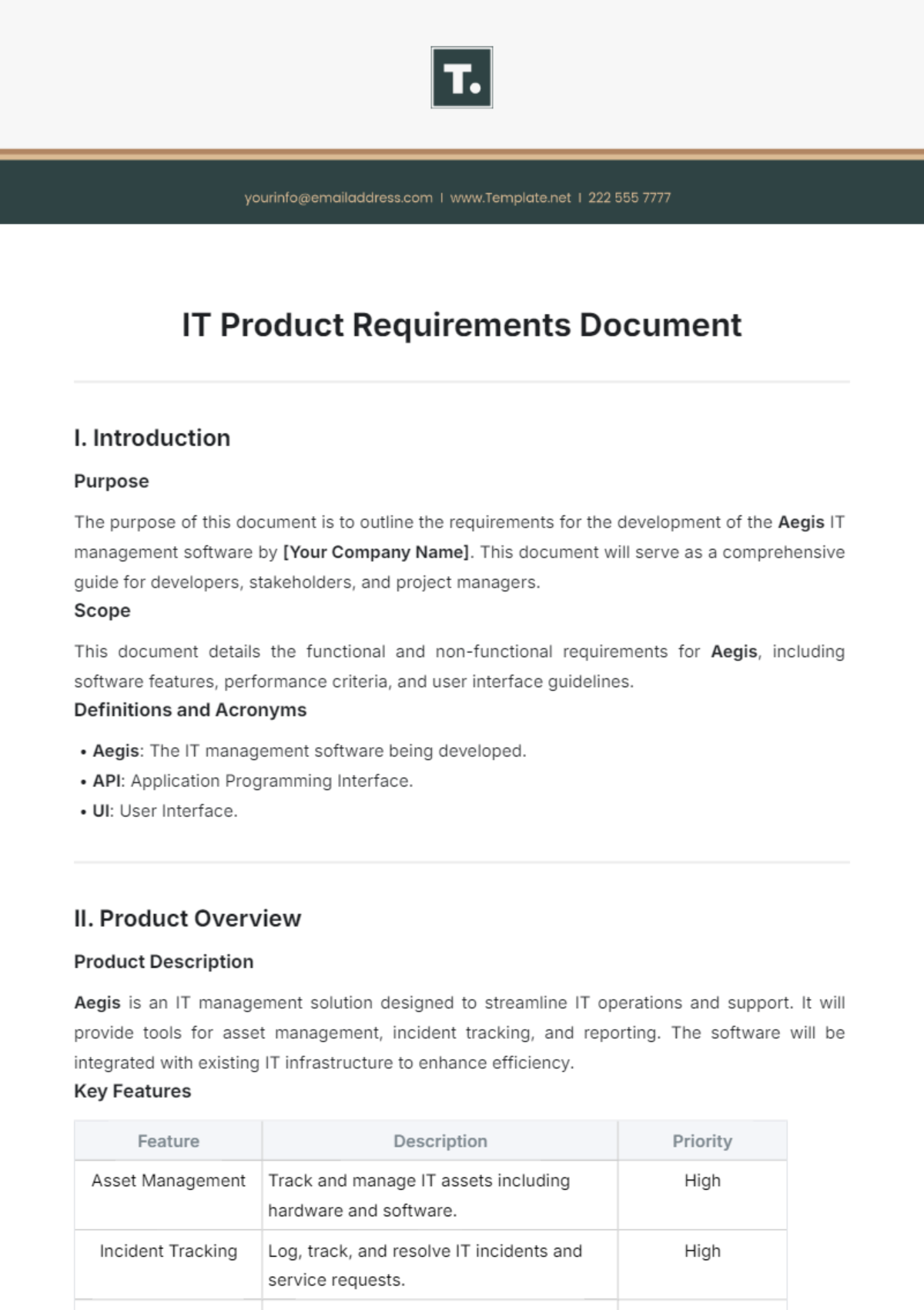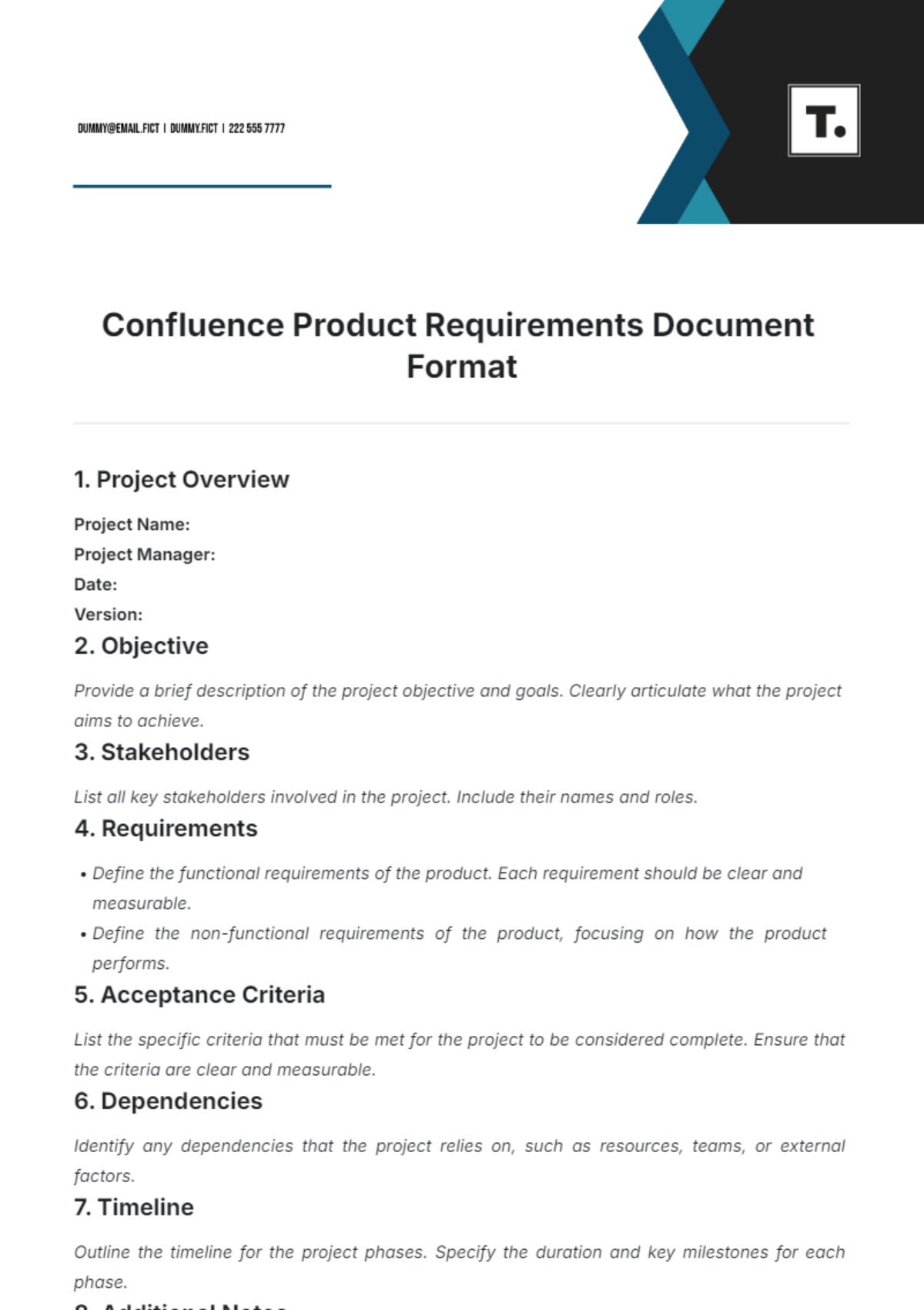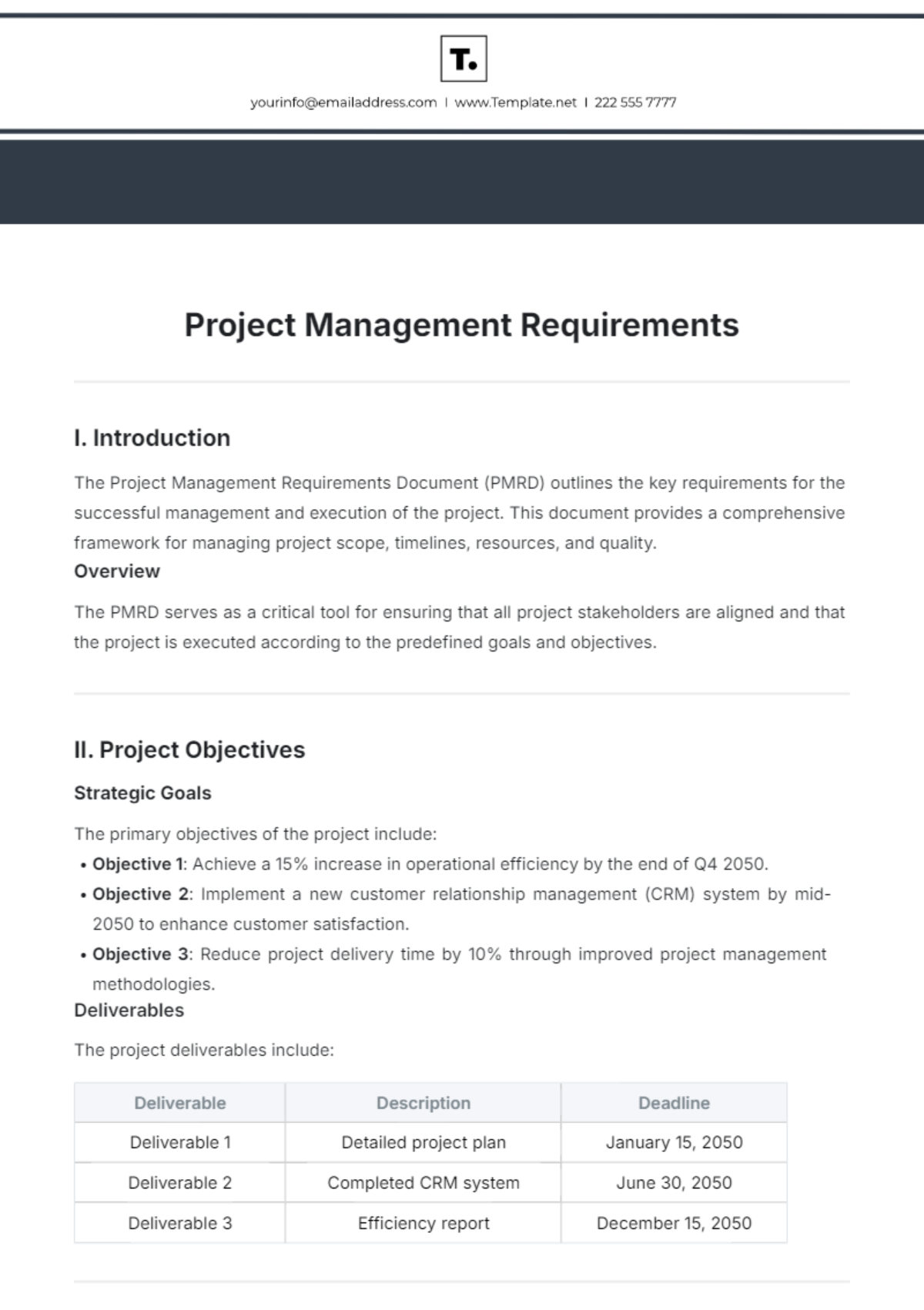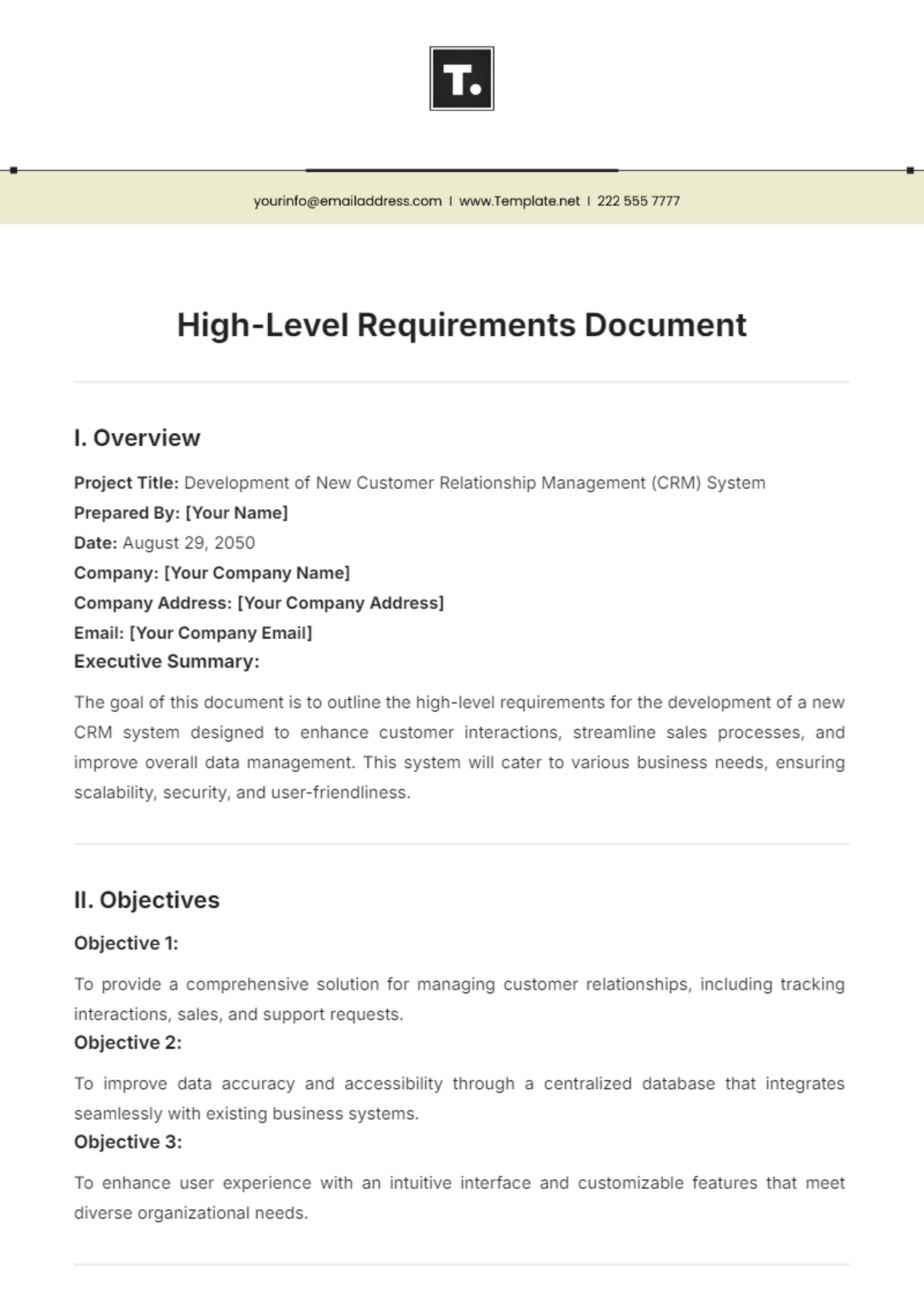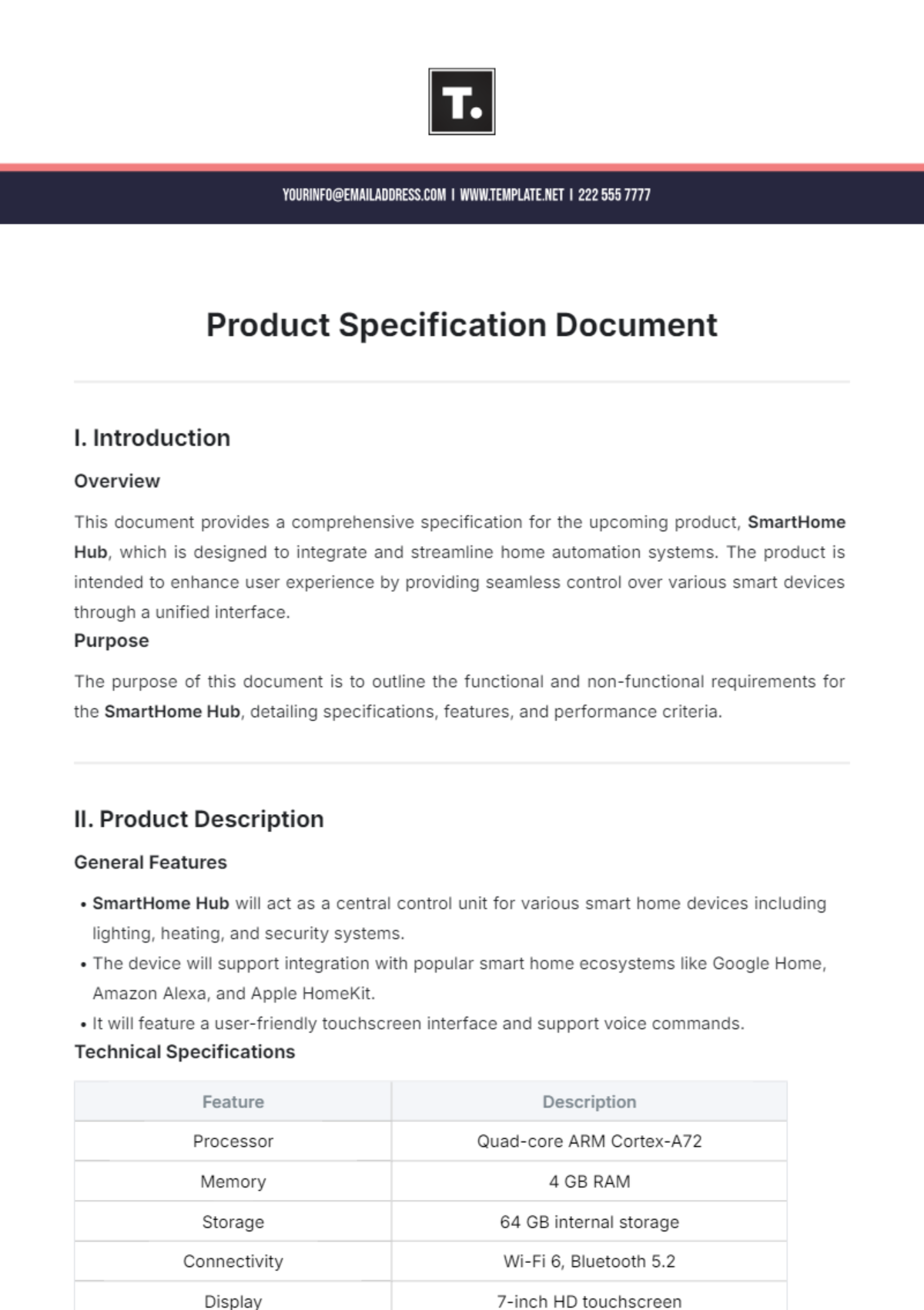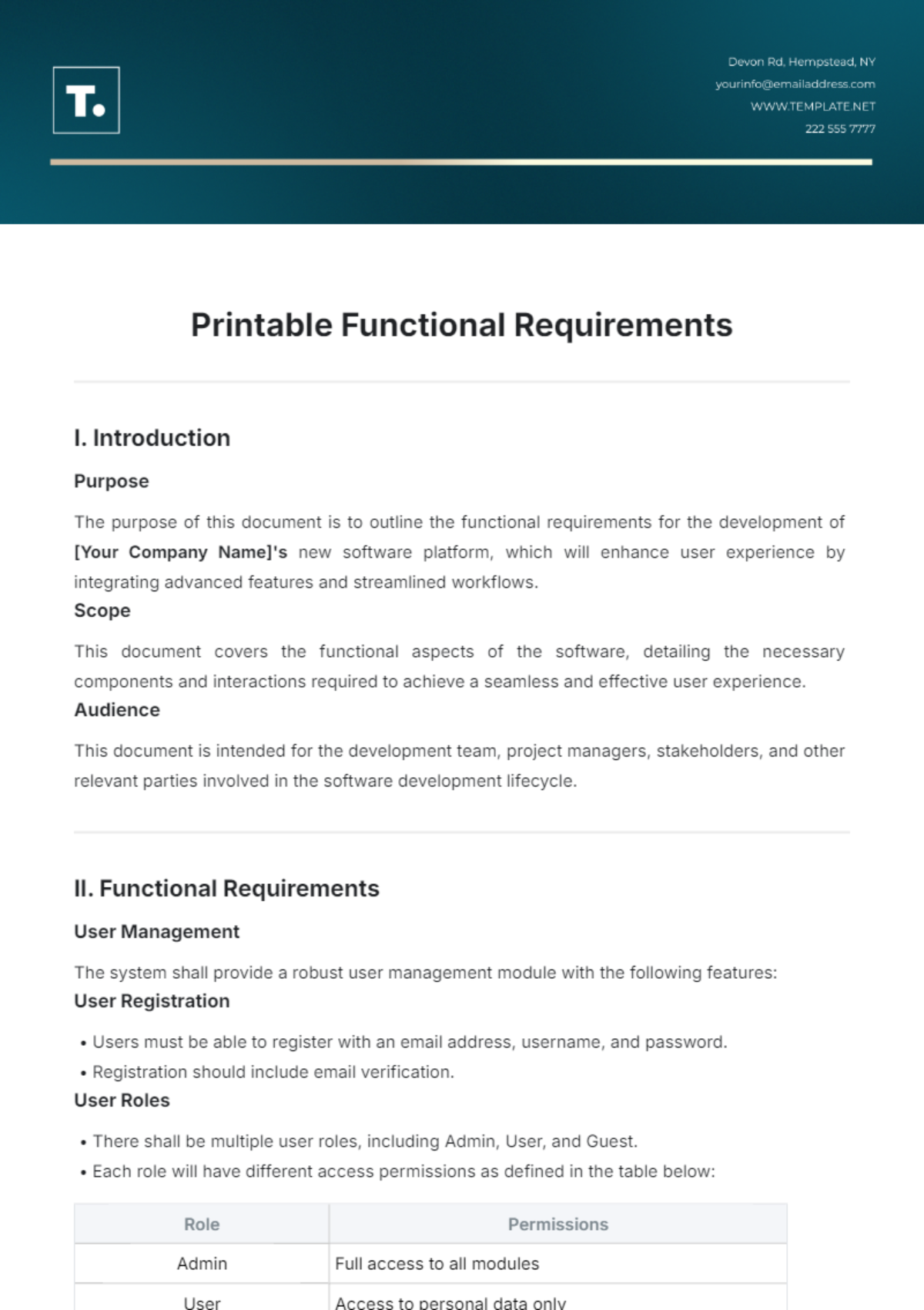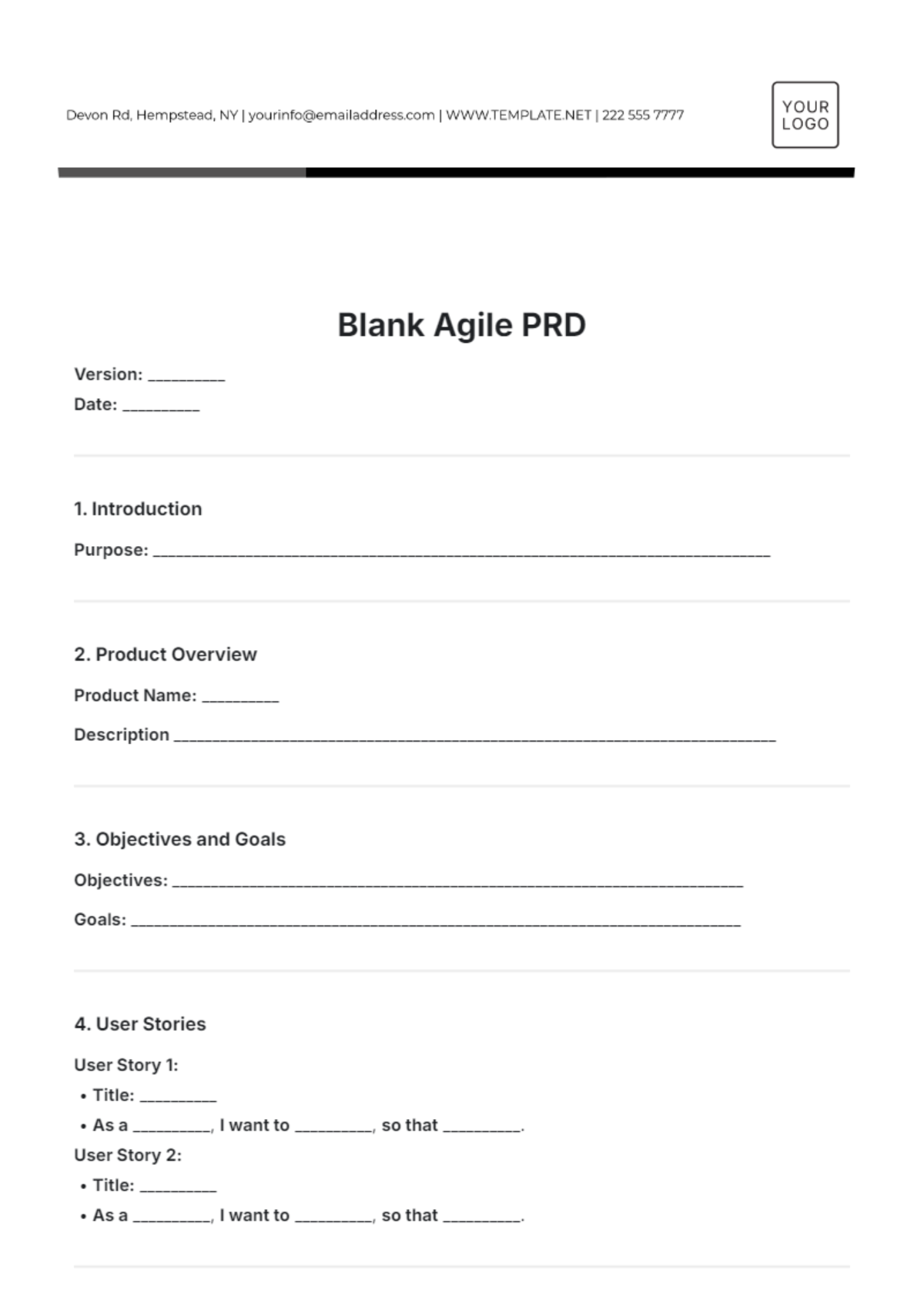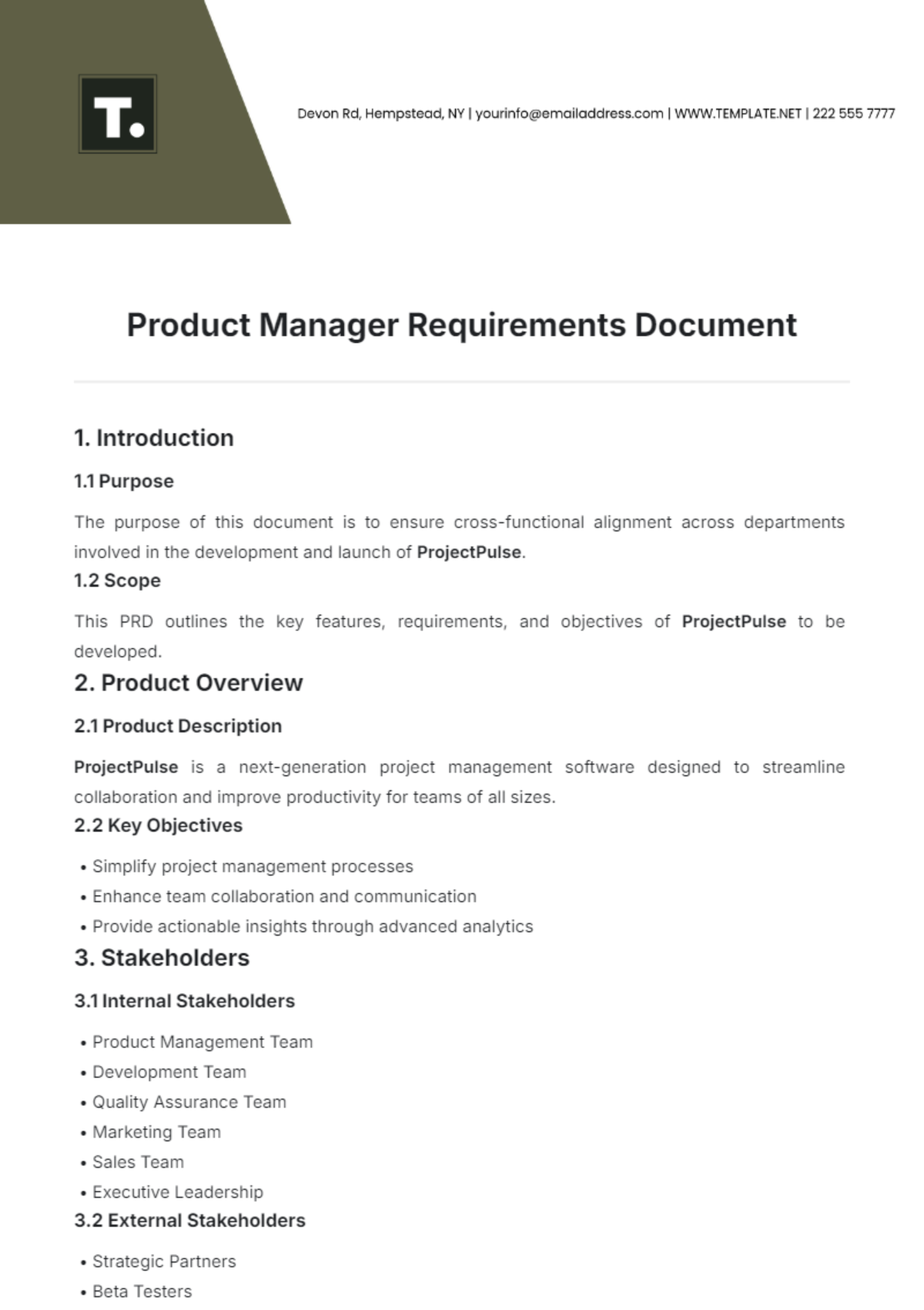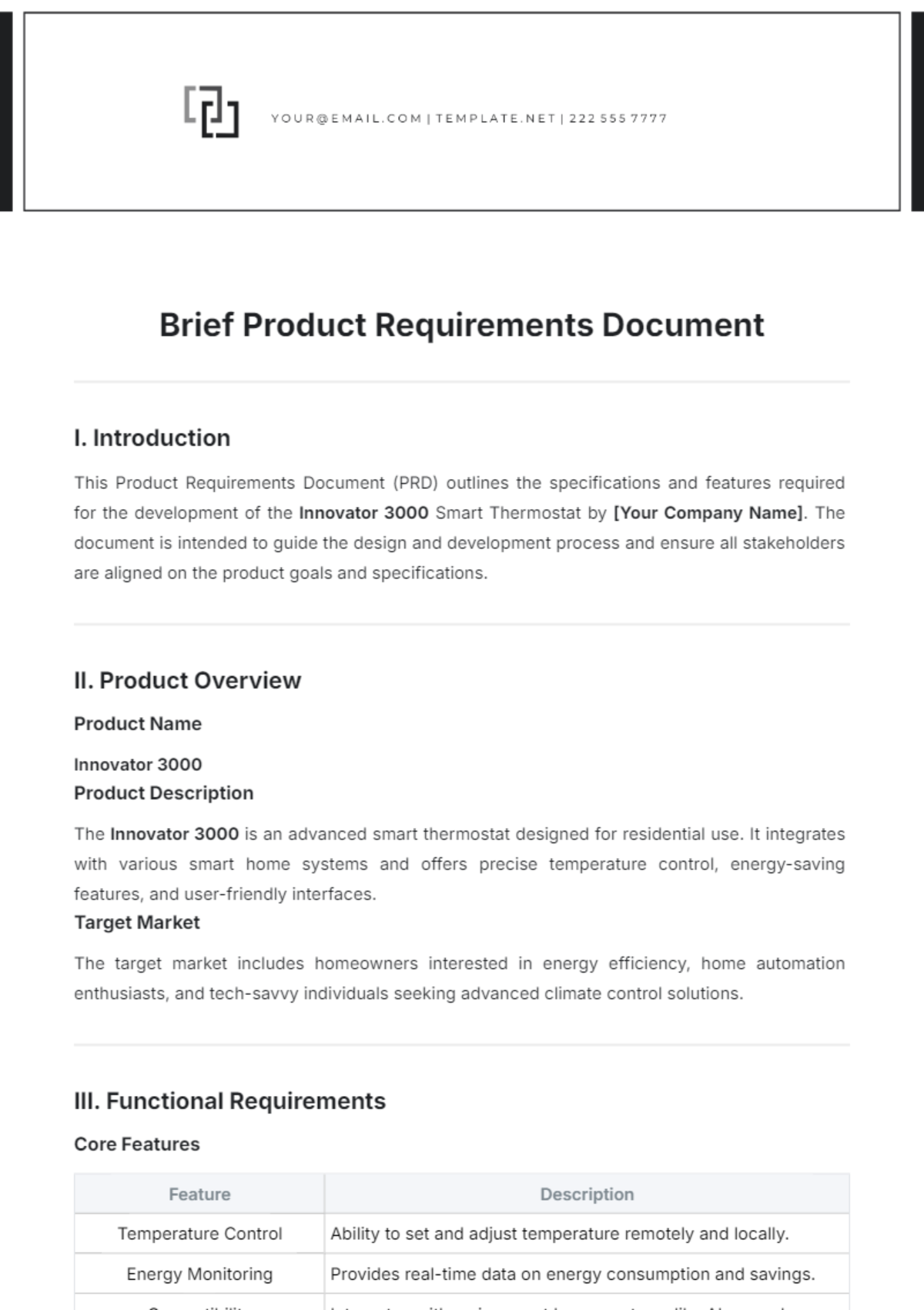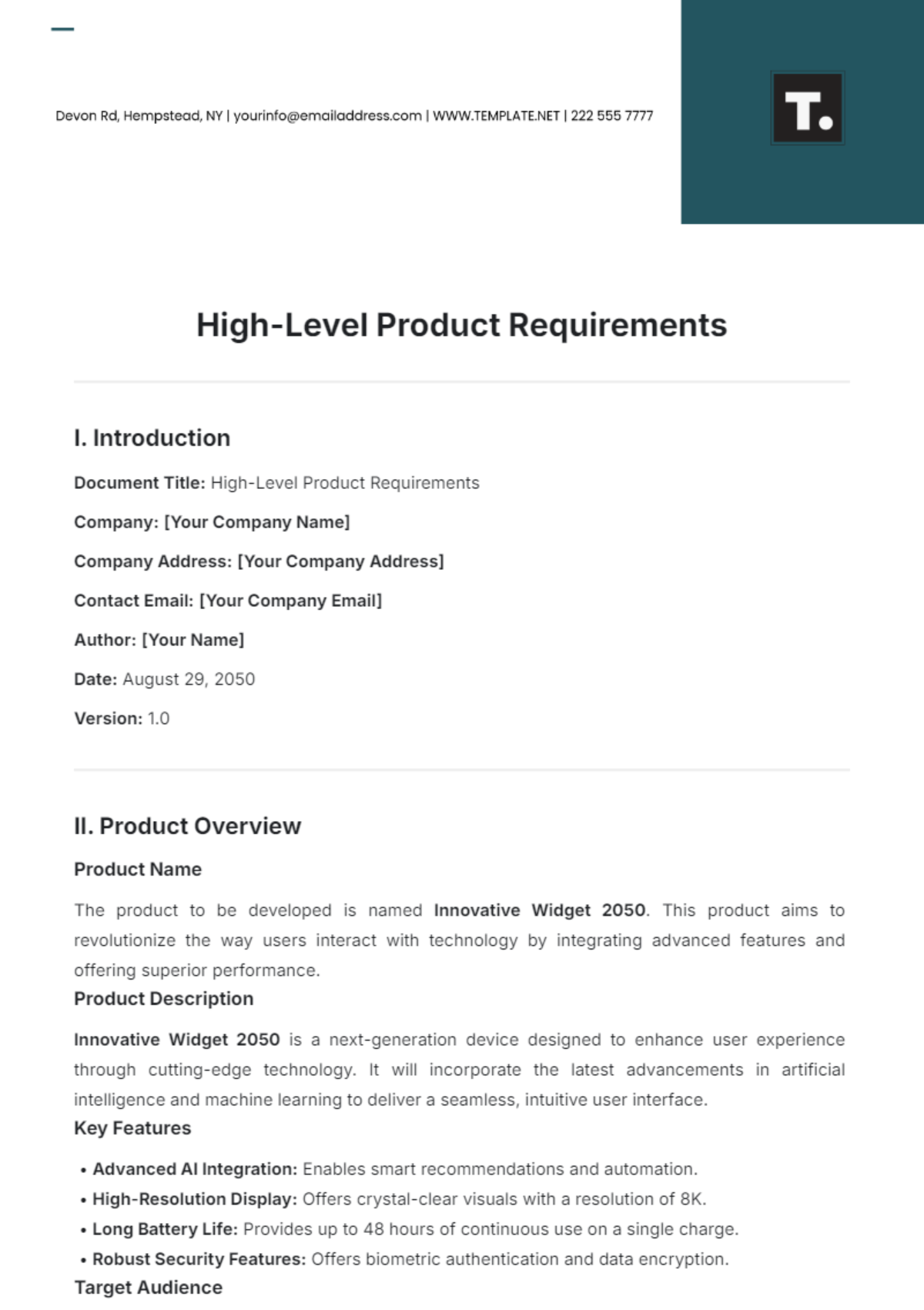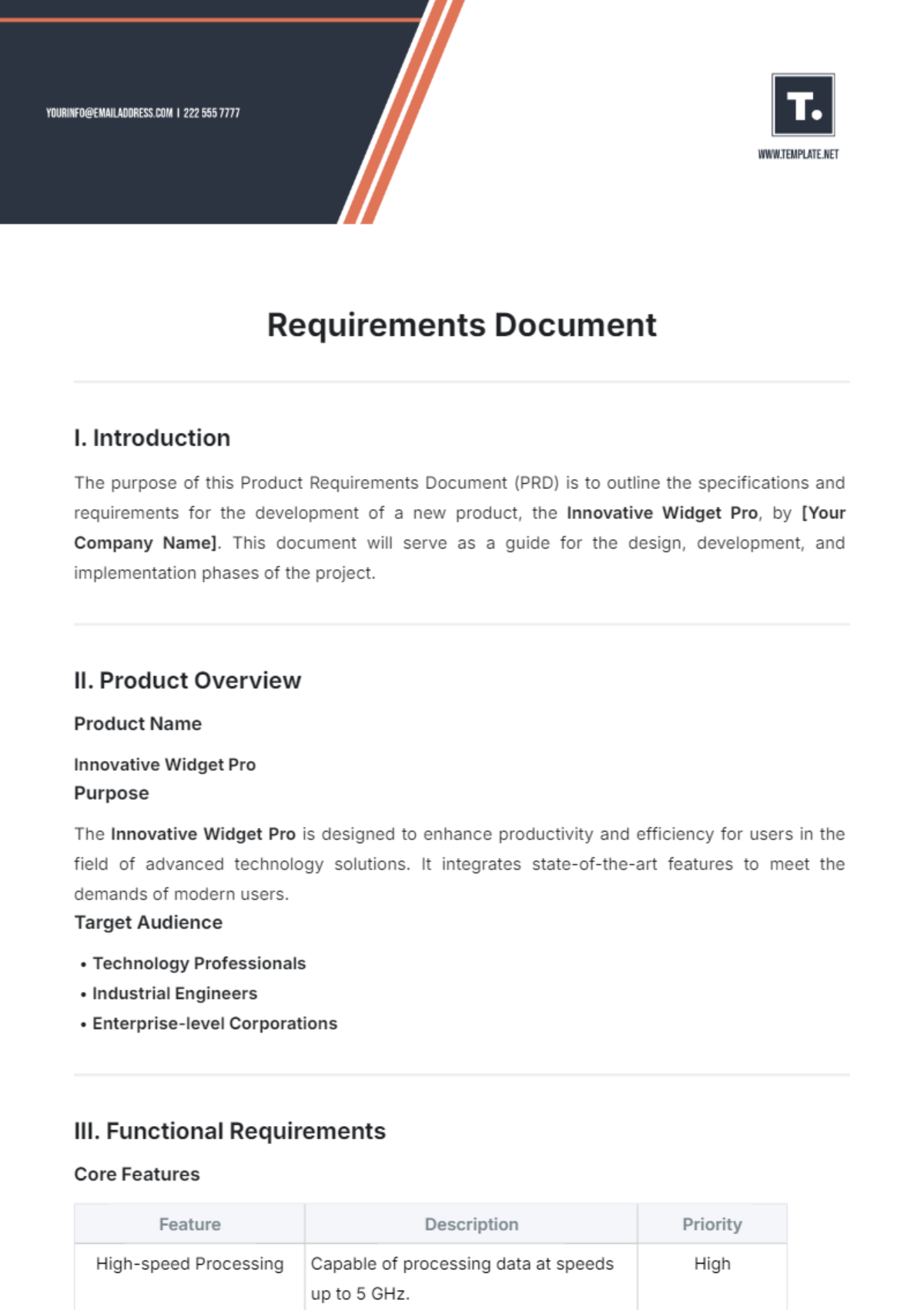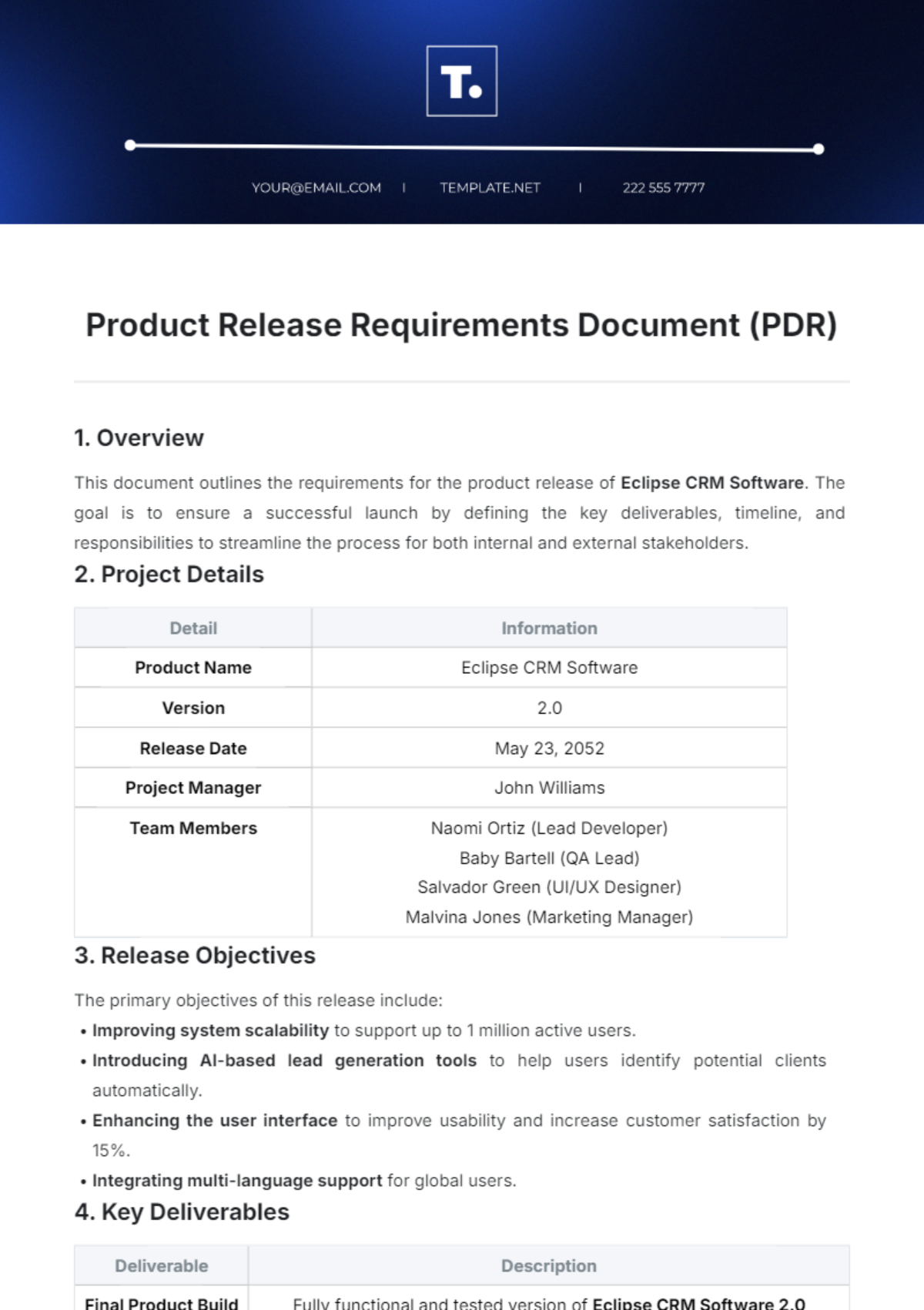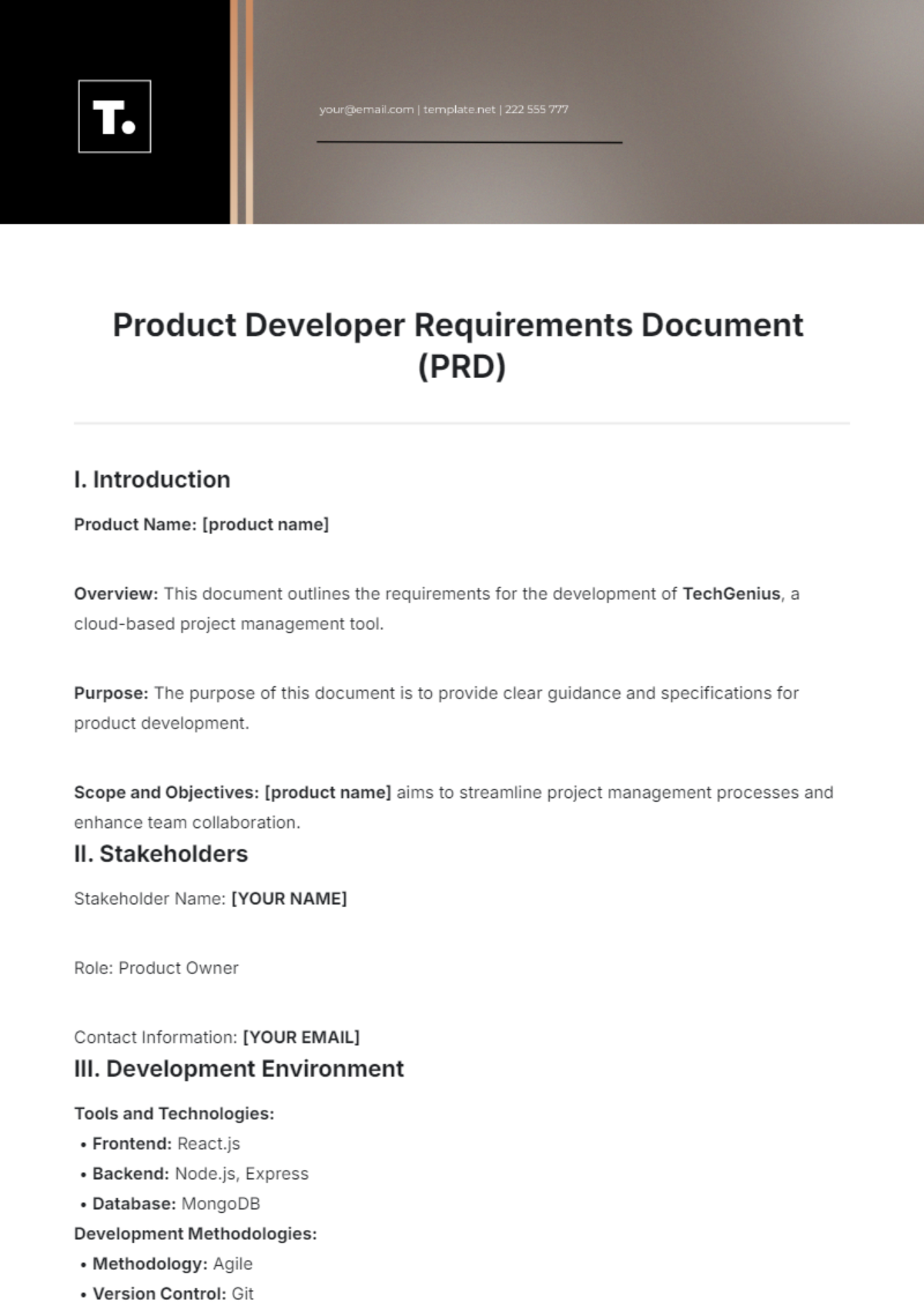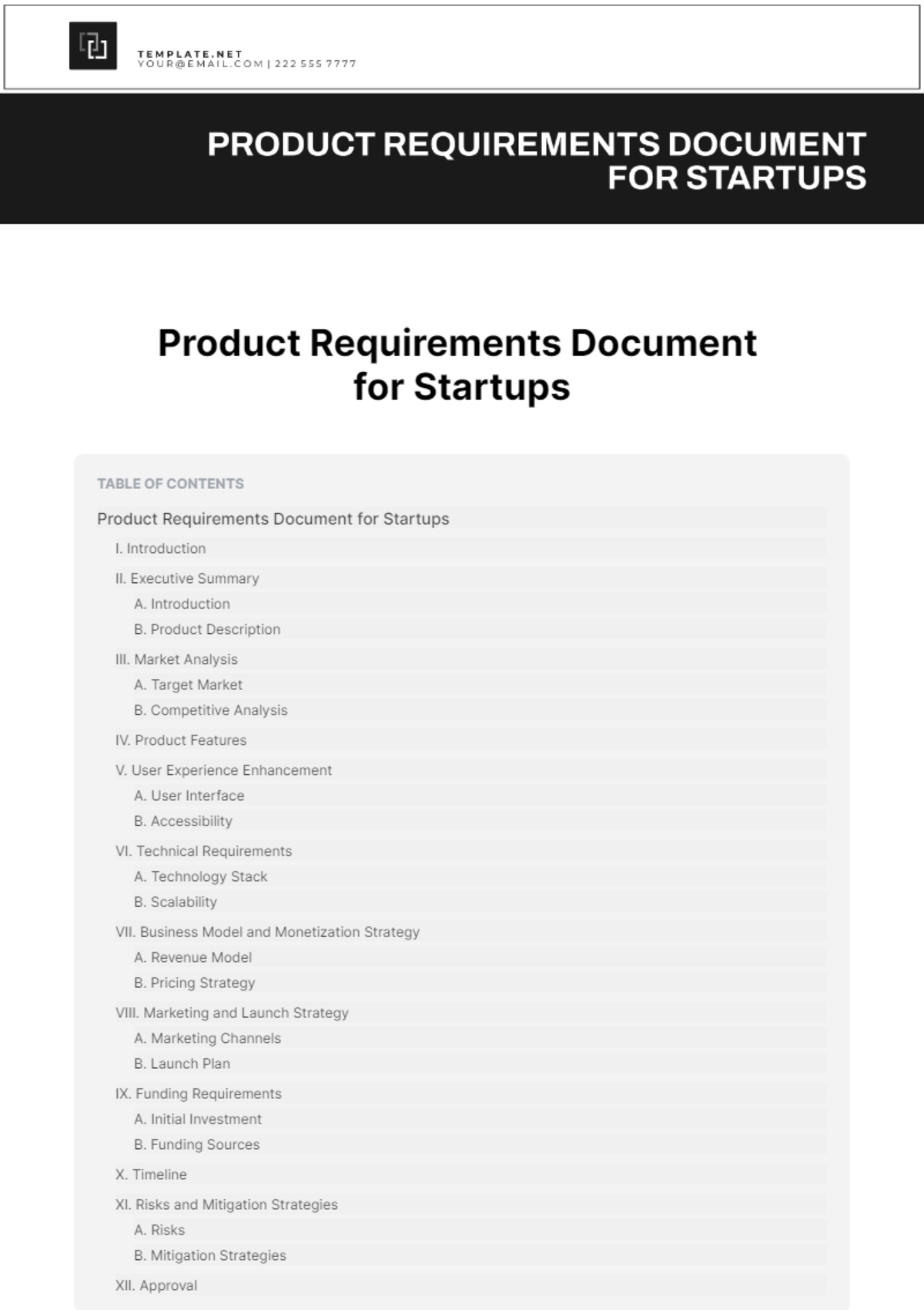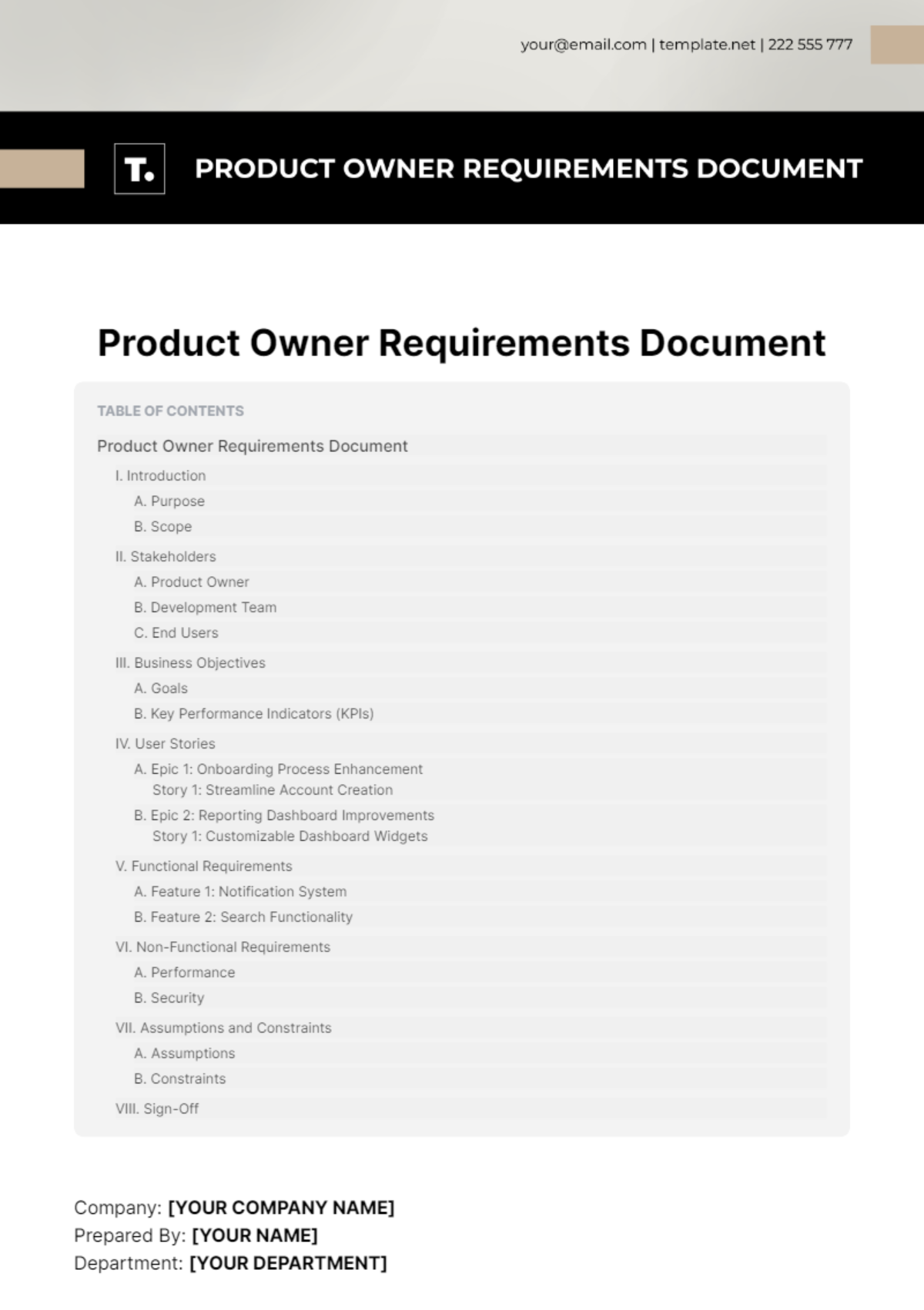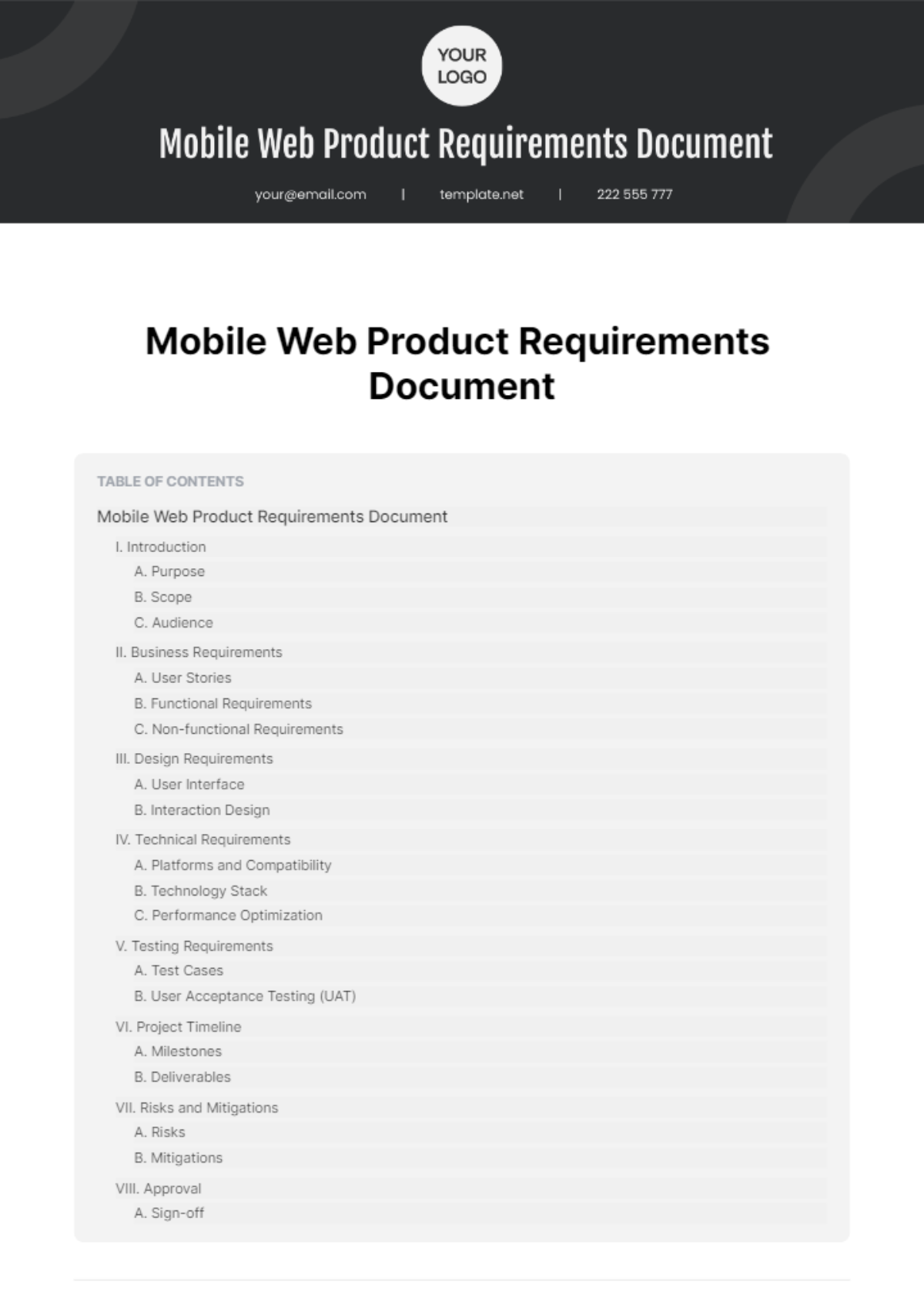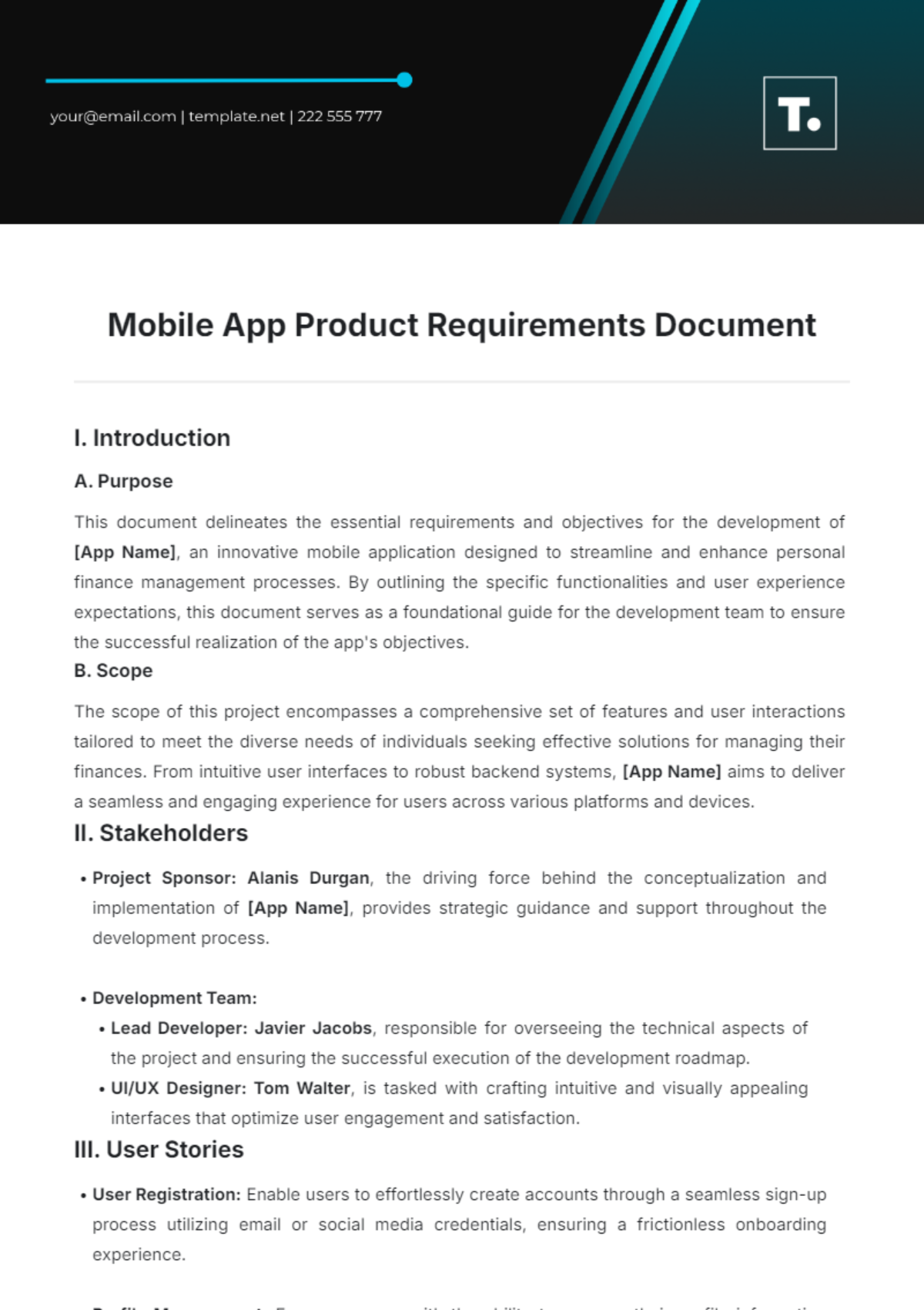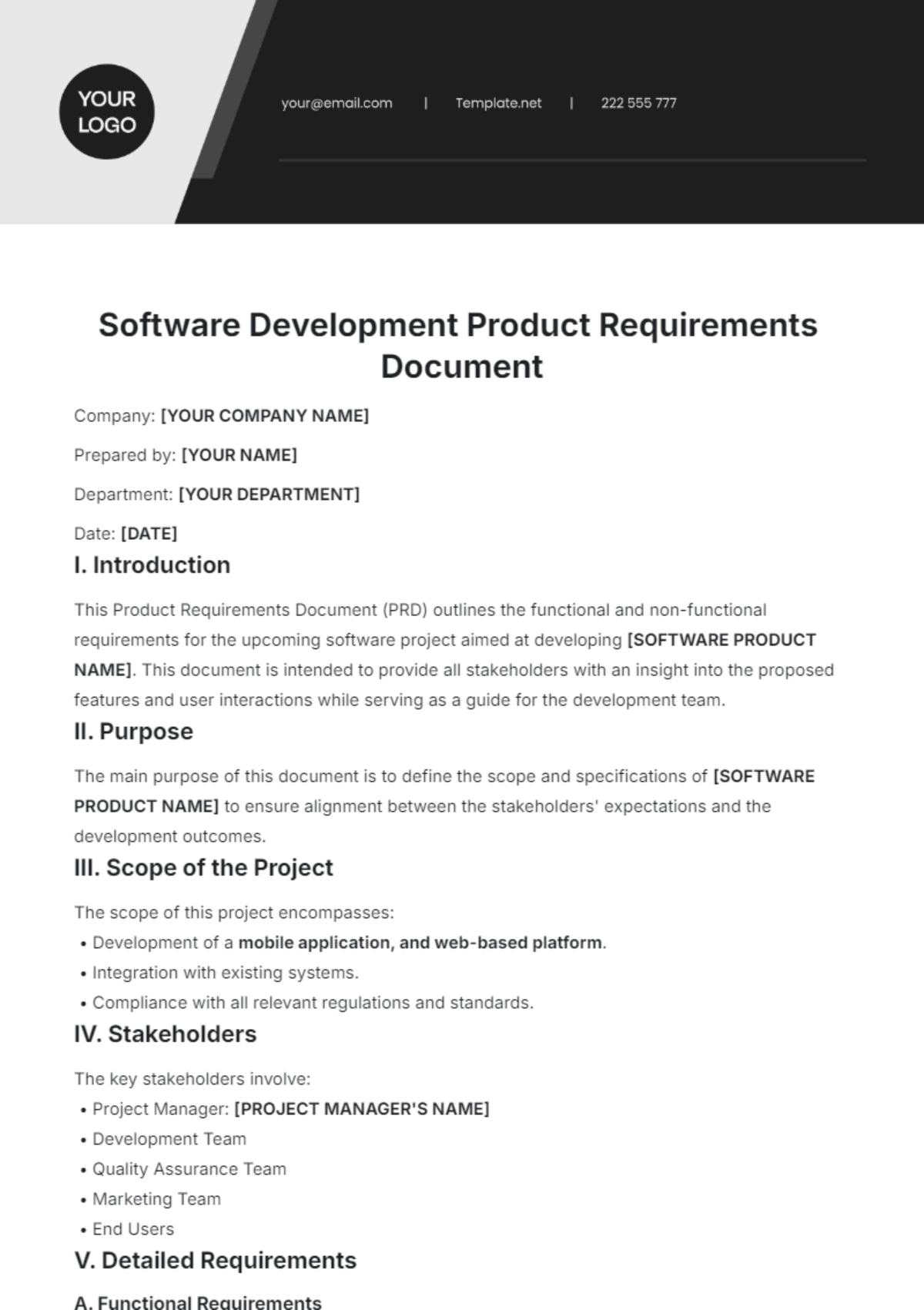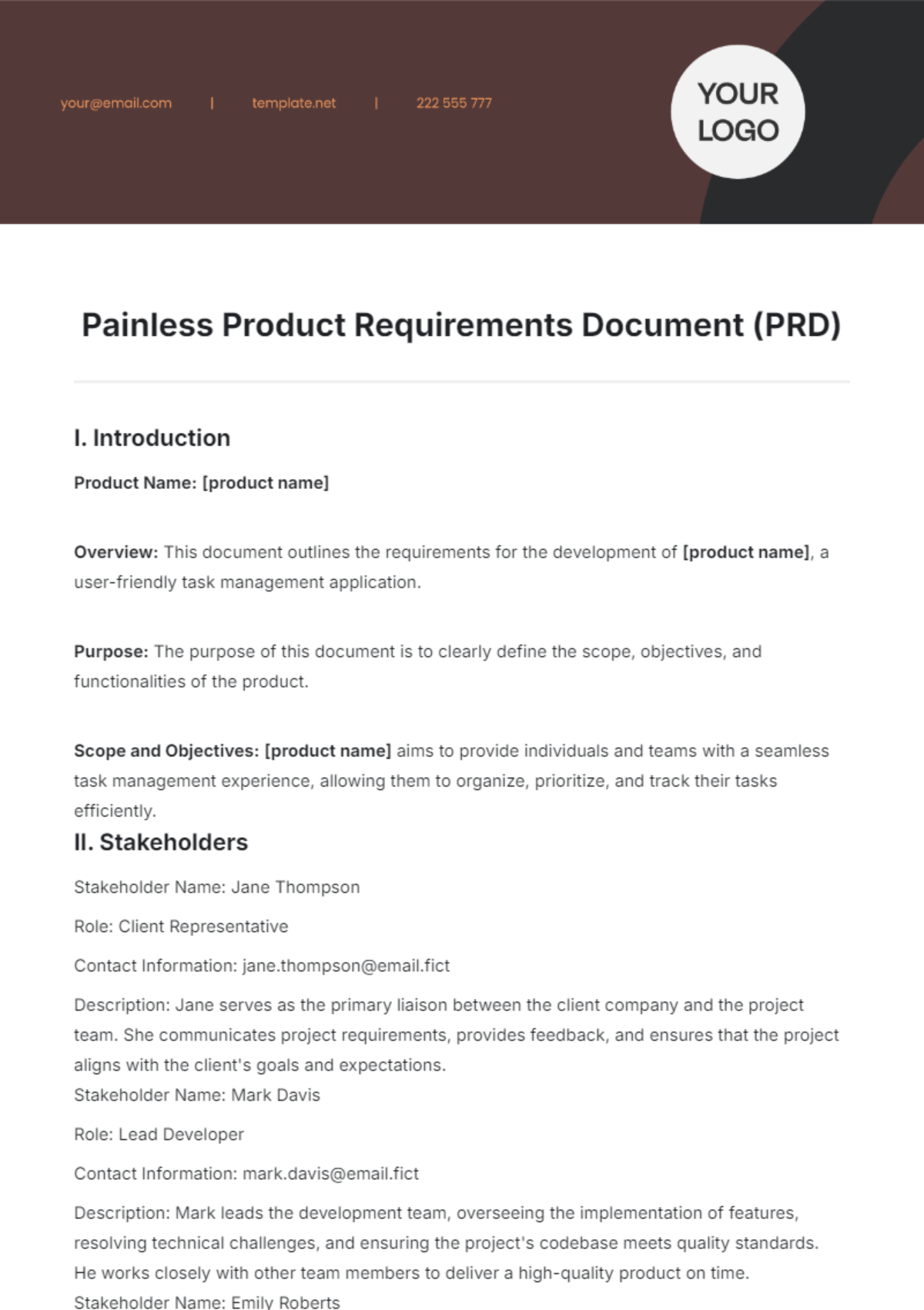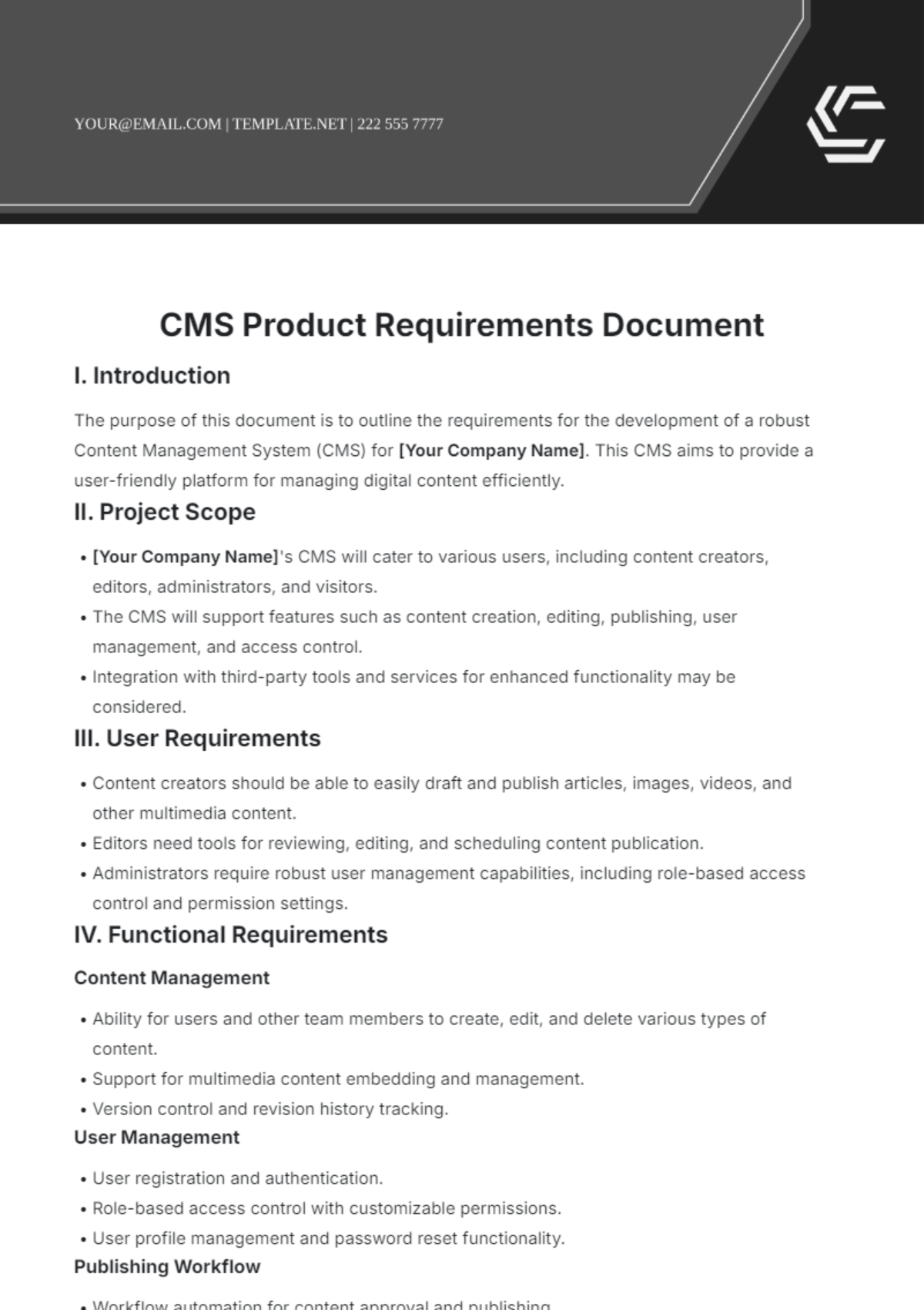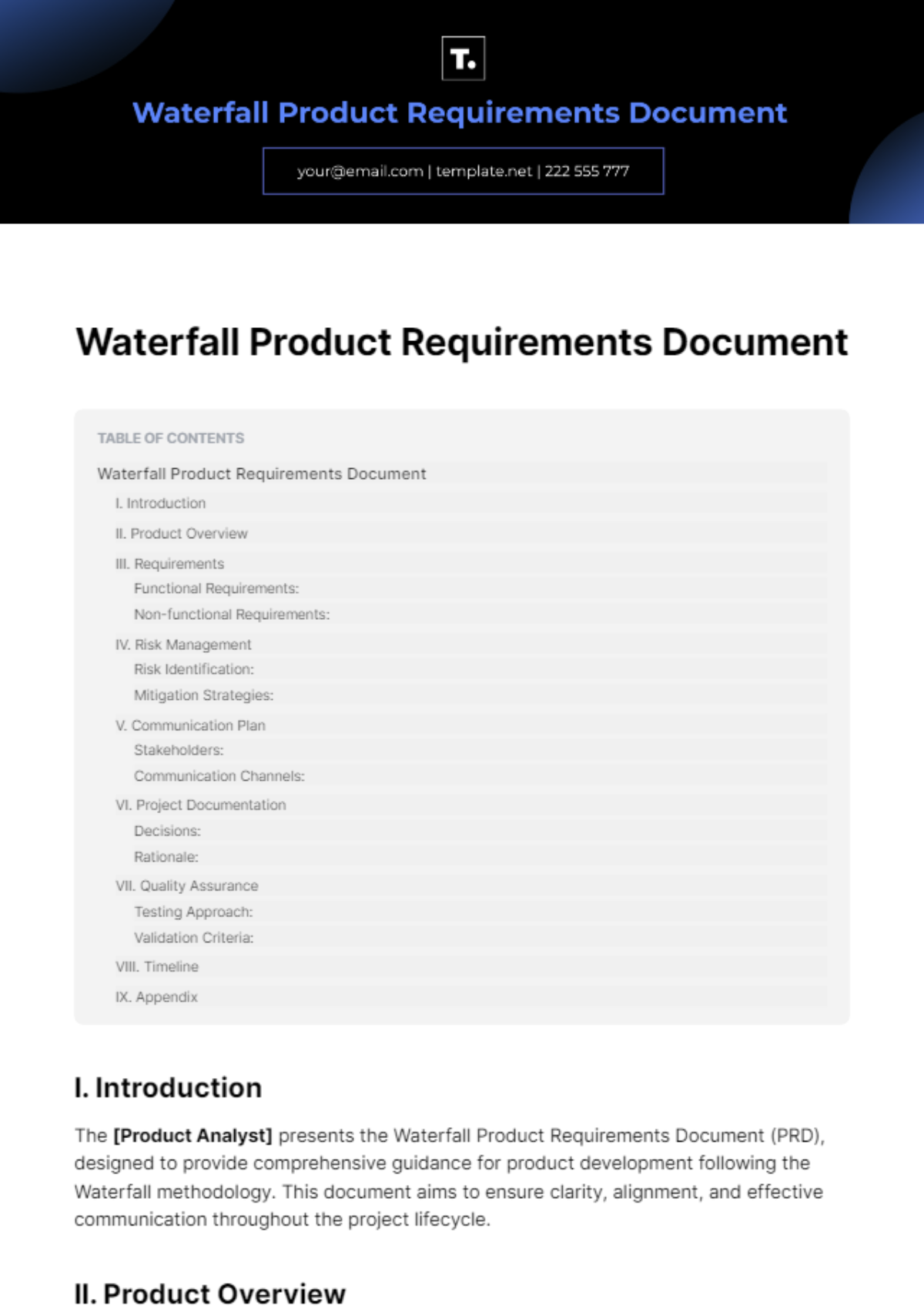Technical Product Requirements Document
Scope
Project Nova will encompass the following:
Integration with existing financial systems.
User interface design for enhanced usability.
Backend infrastructure for robust performance.
Security measures to ensure data protection.
I. Project Overview
Background
In response to growing market demands and technological advancements, [Your Company Name] has identified the need for an advanced financial platform to support its expanding operations. Project Nova will replace the current system, which has shown limitations in scalability and user experience.
Objectives
Enhance operational efficiency through automation.
Improve data accuracy and reporting.
Provide a user-friendly interface for end-users.
Ensure compliance with industry regulations.
II. Functional Requirements
System Requirements
Requirement | Description |
|---|---|
Integration | The system must integrate with existing ERP systems. |
Data Storage | Utilize a cloud-based database with redundancy and backup capabilities. |
User Management | Implement role-based access controls and user authentication mechanisms. |
Reporting | Generate customizable reports with export options in multiple formats. |
User Interface
The user interface of Project Nova should meet the following criteria:
Ease of Navigation: Intuitive layout and navigation menus.
Accessibility: Compliance with WCAG 2.1 standards for accessibility.
Customization: Allow users to customize dashboards and report views.
III. Technical Specifications
Architecture
Project Nova will be built on a microservices architecture to ensure scalability and flexibility. The architecture will include:
Frontend: Developed using React.js for a dynamic and responsive user experience.
Backend: Utilizes Node.js and Express for efficient API management.
Database: Hosted on AWS RDS for reliable and scalable data storage.
Performance Metrics
Performance will be evaluated based on the following metrics:
Response Time: API responses should be under 200ms.
Uptime: The platform should achieve 99.9% uptime.
Scalability: The system should handle up to 10,000 concurrent users.
IV. Security Requirements
Data Protection
Project Nova must adhere to the following security standards:
Encryption: Data at rest and in transit should be encrypted using AES-256.
Authentication: Implement multi-factor authentication for all user accounts.
Compliance: Ensure compliance with GDPR and CCPA regulations.
Incident Response
An incident response plan should be established to address potential security breaches:
Detection: Monitor systems for unusual activity.
Response: Immediate action to contain and mitigate incidents.
Reporting: Notify stakeholders and regulatory bodies as required.
V. Testing and Validation
Testing Phases
The following testing phases will be conducted:
Unit Testing: Validate individual components for functionality.
Integration Testing: Ensure compatibility and data flow between components.
User Acceptance Testing (UAT): Conduct testing with end-users to confirm system meets requirements.
Validation Criteria
Accuracy: Verify that the system processes data correctly.
Usability: Confirm that the system is user-friendly and meets user needs.
Performance: Ensure that performance metrics are met.
VI. Deployment Plan
Stages
Deployment will occur in the following stages:
Development: Deploy to a development environment for initial testing.
Staging: Roll out to a staging environment for final testing and validation.
Production: Launch the platform to the live environment.
Rollback Strategy
In case of deployment issues, a rollback strategy will be in place:
Backup: Maintain up-to-date backups of all systems.
Reversion: Roll back to the previous stable version if necessary.
VII. Signatory
By signing this document, the undersigned acknowledge that they have reviewed and approved the Technical Product Requirements for Project Nova.
